Champions of Technology

BIG PROJECT ME RECOGNISES EXCELLENCE IN DIGITAL CONSTRUCTION ACROSS 12 DISTINCT CATEGORIES
2023 ME DIGITAL CONSTRUCTION AWARDS







BIG PROJECT ME RECOGNISES EXCELLENCE IN DIGITAL CONSTRUCTION ACROSS 12 DISTINCT CATEGORIES
2023 ME DIGITAL CONSTRUCTION AWARDS





The first edition of Big Project ME’s ME Digital Construction Awards took place on 15 March in Dubai and recognised excellence across 12 distinct categories

Digital twins and the processes they enable must be embraced to deliver the improved business outcomes demanded in our changing world says Bentley Systems’ Steve Cockerell
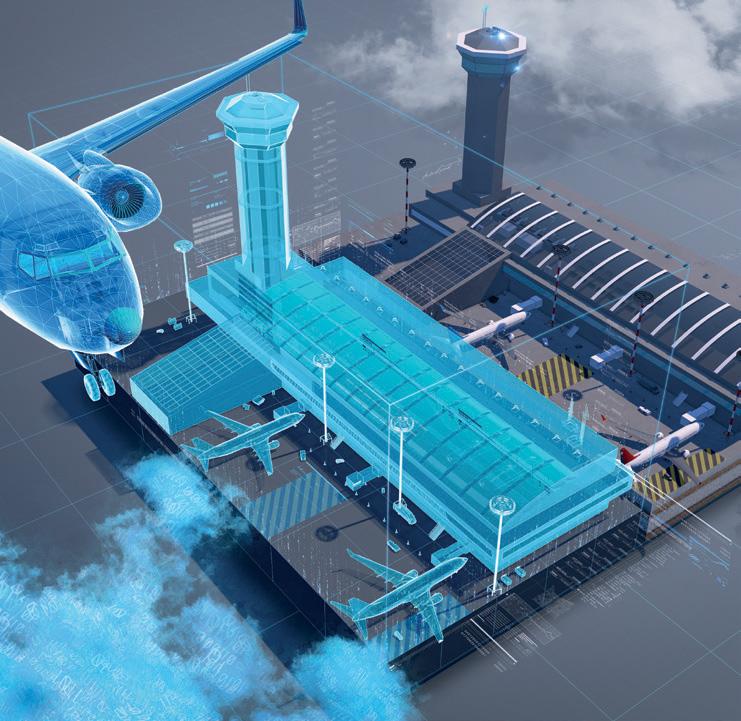
Due to the lack of women in the construction industry, many women don’t think that the sector might be a professional opportunity for them, and this is where we must act to change this misconception says ACCIONA’s Adelaida Fernandez

Through customisable data analytics and global best practice, every construction project can start off on the right foot says Faithful+Gould’s Oliver Kallenborn
Mario Saab says the industry must scale up efforts to improve existing buildings and communities to address climate change

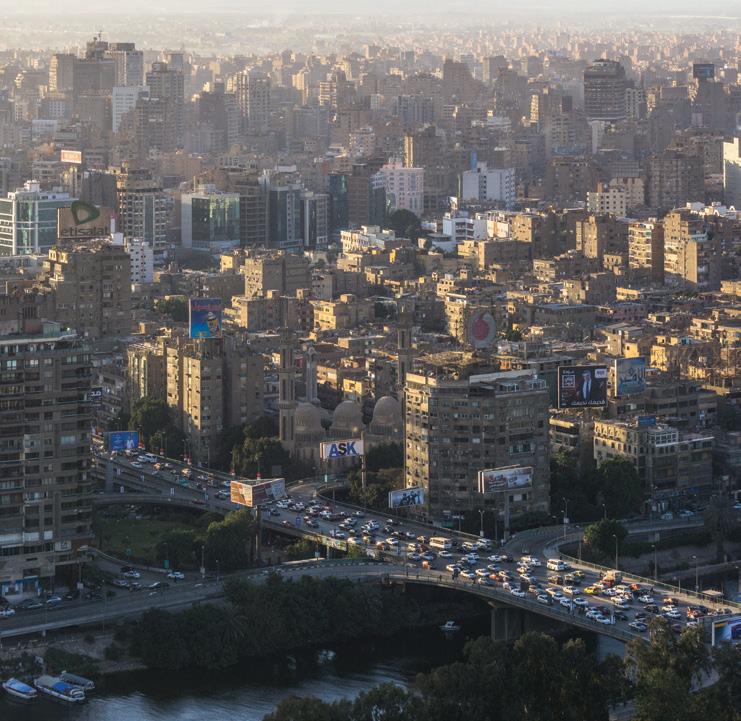
Developer Sobha Realty completes the Waves tower in its Sobha Hartland residential community in Dubai
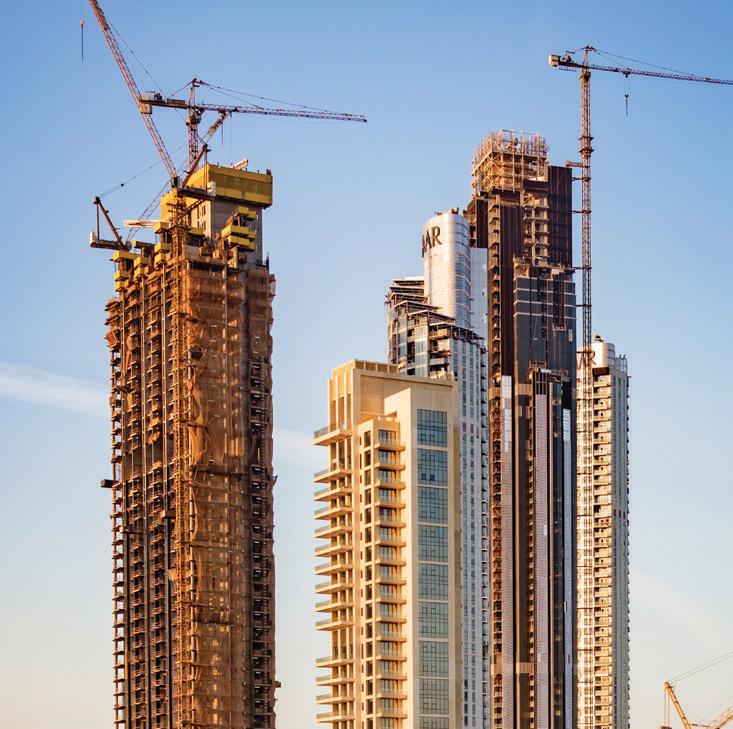
interesting insights into what the industry is working on, and while talking to people on the night of the gala event on 15 March, I was given a glimpse of what could potentially have a positive impact on the industry going forward.
There’s certainly a strong appetite for cutting edge transformational technology in the industry, and the success of the inaugural ME DCA Awards proved that. It’s for this reason that the ME DCA Awards will return in 2024 with an expanded scope and categories, which I hope will serve as the industry’s go-to platform to showcase digital excellence in construction.
Welcome to a new chapter for Big Project Middle East (BPME)! Having spent five years on Middle East Consultant, followed by a year on Middle East Construction News, I look forward to this exciting new chapter, steering CPI Trade Media’s most well-established construction brand.
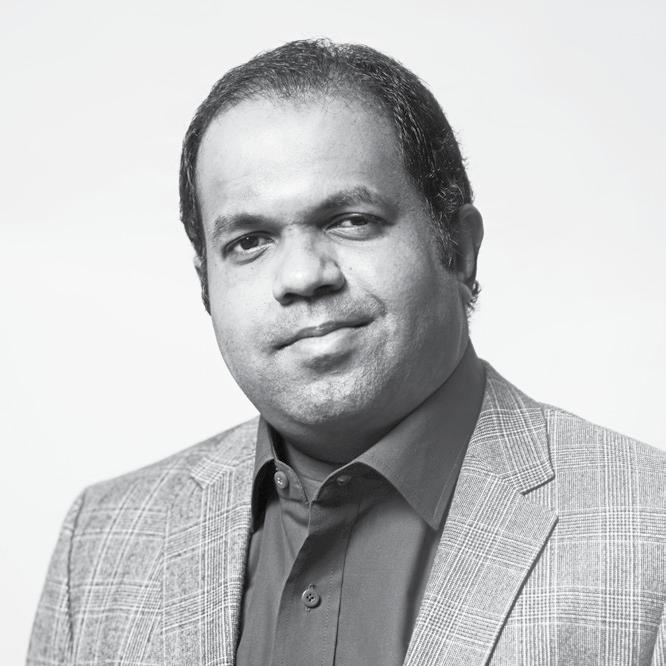
While I’m still plotting the course of what I want to do with the brand going forward, I can confirm the region’s governments, developers and operators will be a significant focus. There’ll also be a strong focus on several key topics including energy, digital transformation and technology, sustainability, and the world’s most precious resource - water. My ultimate goal is to grow this brand’s reach and standing as the region’s go-to journal for construction focused news and debate.
From a technology standpoint, there are some truly fantastic things happening in the sector - I was fortunate to get a glimpse of this through my involvement with the first edition of BPME’s ME Digital Construction Awards (ME DCA Awards). Having being involved in the event as a judge, allowed me to gain
While it is too early to announce when in 2024 the second edition of the ME DCA Awards will take place, rest assured you’ll hear about it in the coming months. Ahead of that, we’ll also be announcing the opening of nominations for BPME’s most prestigious event in the calendar year – the annual Big Project Middle East Awards.
In the run up to the awards, some of the aforementioned topics – starting with energy and sustainability and water – will be thrust into sharp focus, through the second edition of the Energy & Sustainability Summit (24 May) and the new Future of Water Summit (21 June). Until we meet then, enjoy the issue and stay safe.
Jason Saundalkar HEAD OF CONTENTjason.s@cpitrademedia.com
MEConstructionNews me-construction-news

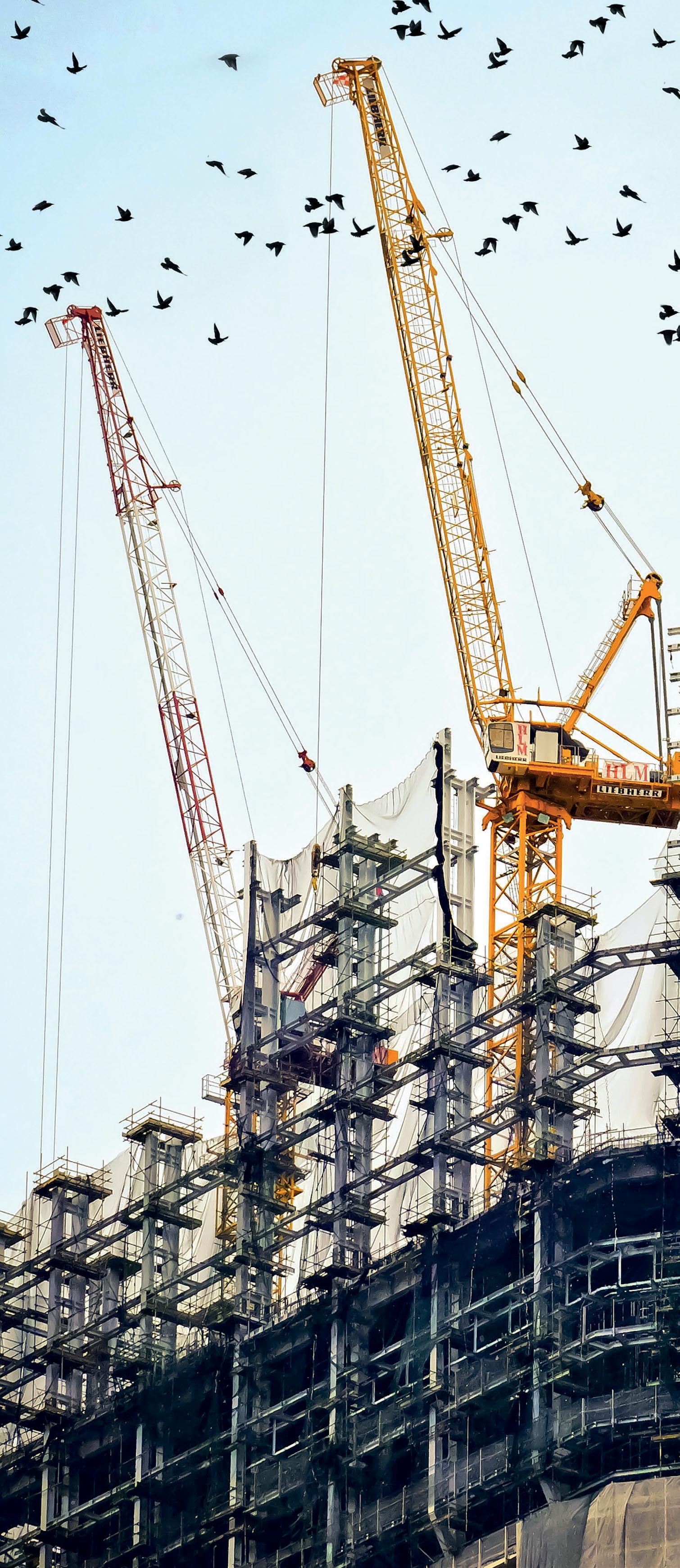
BIM Management
Project Collaboration
Contract Management
Asset Management
Field Management
Group
MANAGING DIRECTOR Raz Islam raz.islam@cpitrademedia.com
MANAGING PARTNER Vijaya Cherian vijaya.cherian@cpitrademedia.com
DIRECTOR OF FINANCE & BUSINESS OPERATIONS Shiyas Kareem shiyas.kareem@cpitrademedia.com

PUBLISHING DIRECTOR Andy Pitois andy.pitois@cpitrademedia.com
Editorial
HEAD OF CONTENT Jason Saundalkar jason.s@cpitrademedia.com
+971 4 375 5475
Advertising
SALES DIRECTOR Raed Kaedbey raed.kaedbey@cpitrademedia.com
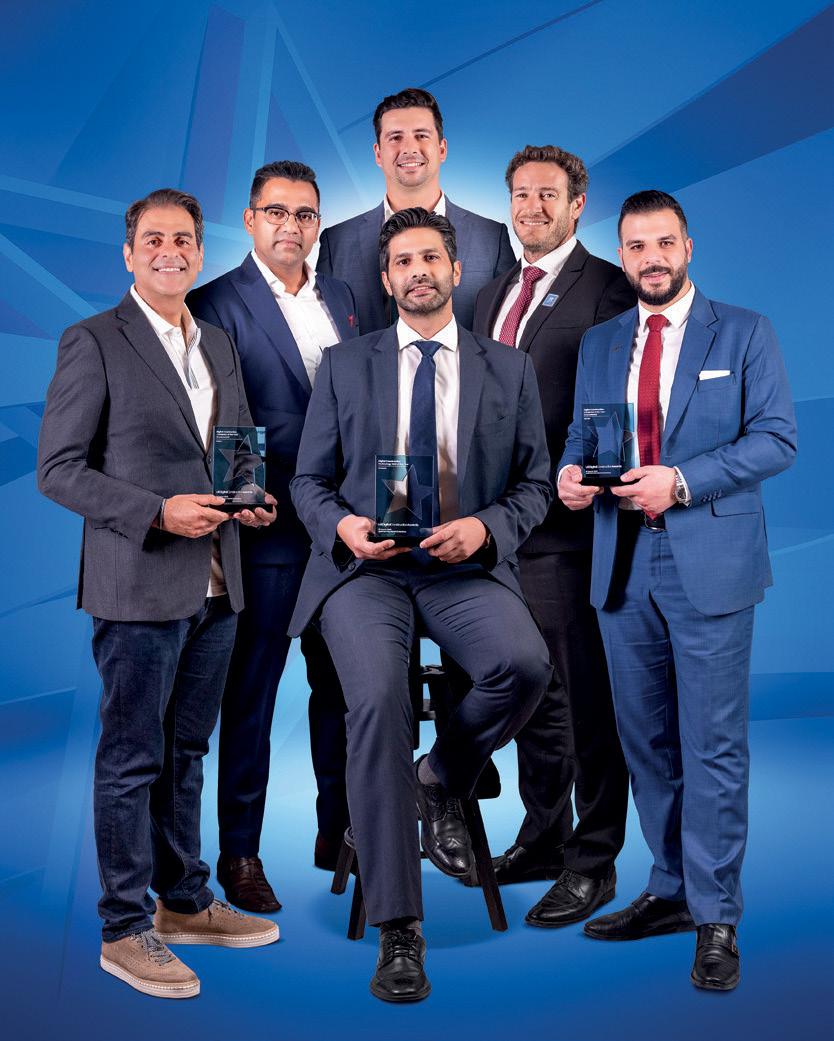
+971 4 375 5715
SALES EXECUTIVE Madeleine Martin madeleine.martin@cpitrademedia.com
+971 4 375 5714
Design
ART DIRECTOR Simon Cobon simon.cobon@cpitrademedia.com
DESIGNER Percival Manalaysay percival.manalaysay@cpitrademedia.com
Photography
PHOTOGRAPHER Maksym Poriechkin maksym.poriechkin@cpitrademedia.com
Marketing & Events
EVENTS EXECUTIVE Minara Salakhi minara.s@cpitrademedia.com
+971 4 433 2856
SOCIAL MEDIA EXECUTIVE Dara Rashwan dara.rashwan@cpitrademedia.com
Circulation & Production
DATA & PRODUCTION MANAGER Phinson Mathew George phinson.george@cpitrademedia.com
+971 4 375 5476
Web Development
WEB DEVELOPER Abdul Baeis abdul.baeis@cpitrademedia.com
WEB DEVELOPER Umair Khan umair.khan@cpitrademedia.com
FOUNDER Dominic De Sousa (1959-2015)

PROPERTY
Azizi Developments

launches Azizi Grand in Dubai Sports City

ANALYSIS: Is Partanna’s cement alternative the key to carbon negative projects?

FINANCE
Moody’s affirms A1 issuer rating for PIF
CONSULTANT
Egis in new partnership with EmiratesGBC
EXPERTS: What the 6th IPCC report means for the MENA region
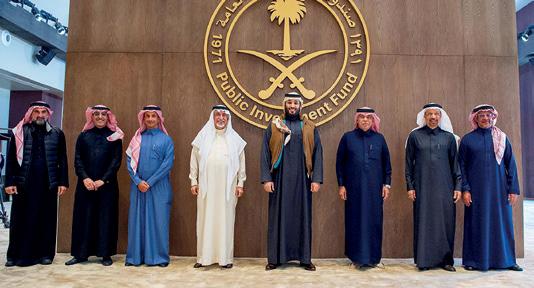
FINANCE
$344.5mn in financing for electric express train project in Egypt

INTERVIEW: Women in Construction profile – ACCIONA’s Adelaida Fernandez
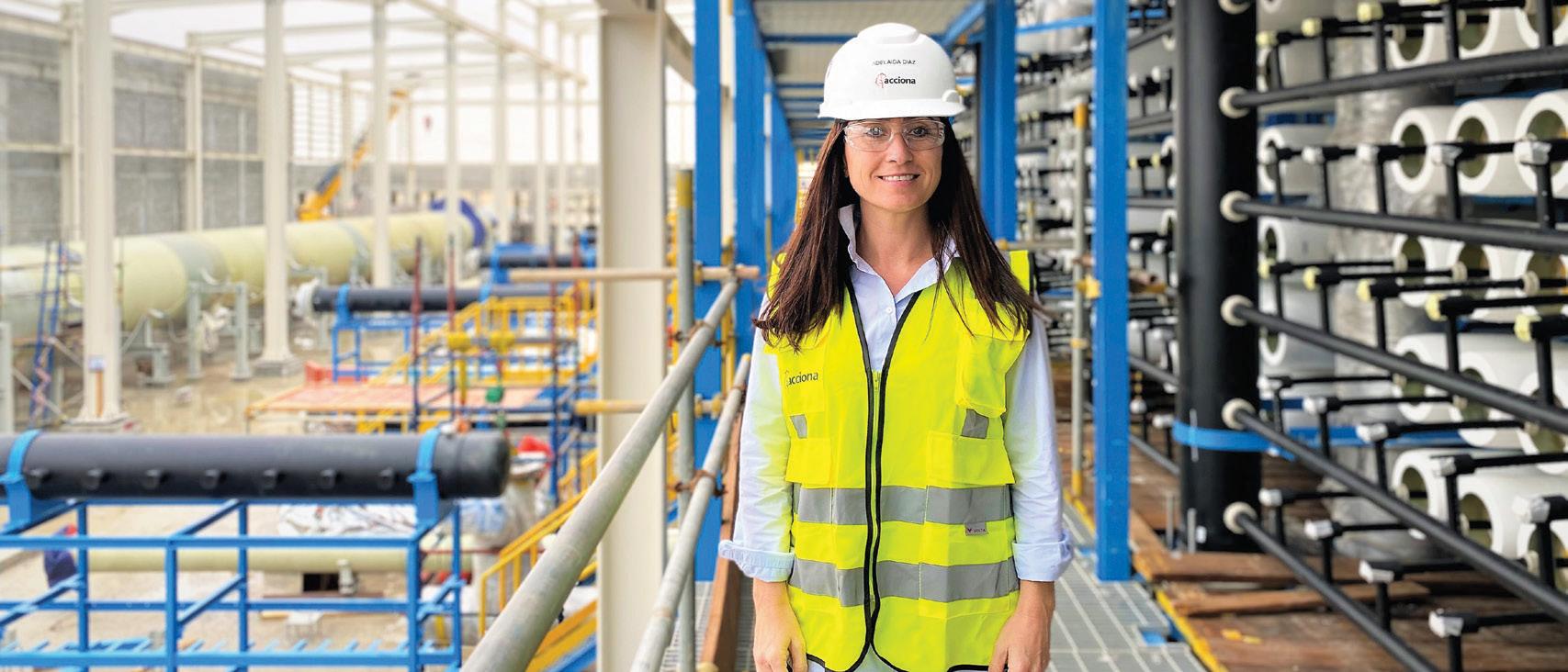
INFRASTRUCTURE
Two bridge and tunnel at Falcon Interchange now open says RTA

Are Architects becoming replaceable? The growth of Smart, AI-led software is putting design in everyone’s hands.

CONSTRUCTION
Contracts for Amaala’s Marina Village awarded says Red Sea Global
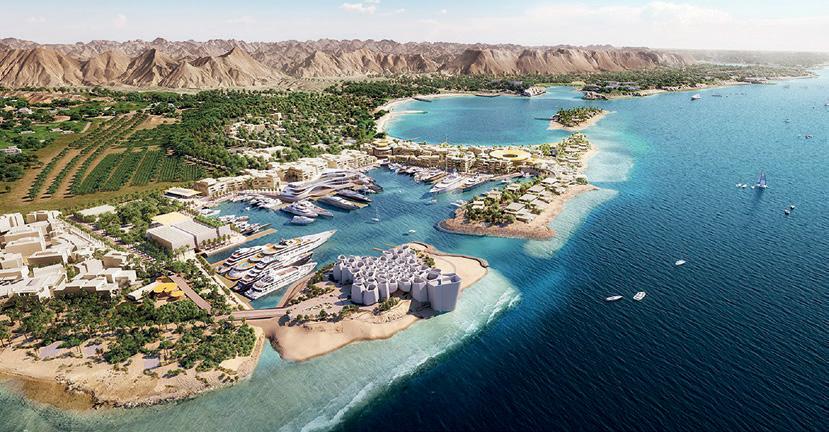
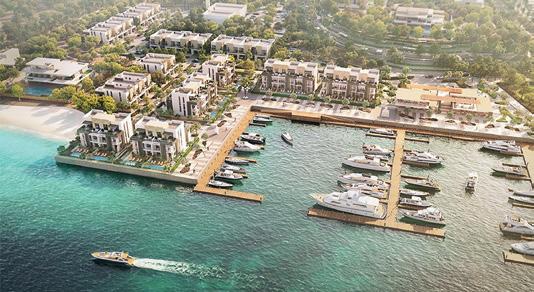
The first development phase of Amaala is underway and expects to welcome its first guests in 2024
CONSTRUCTION
Dar Al Arkan 3D prints ‘smart’ villa in Riyadh
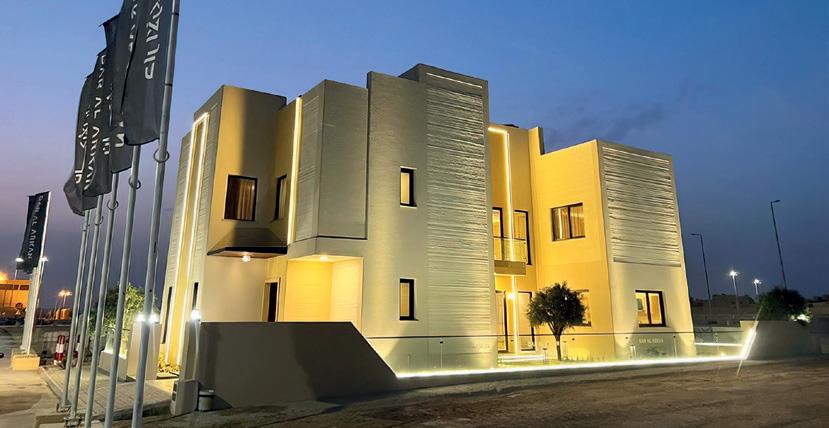
Low-cost local materials were used to create the 3D printable concrete, which was the primary construction material for the walls of the 330sqm structure
CONSTRUCTION
Electric ship-maker to build plant in UAE

The announcement follows news of the company recently sealing a deal with Kuwait’s Badr Sultan Group
PROPERTY
Aldar and Mubadala ink deal to develop commercial assets in ADGM
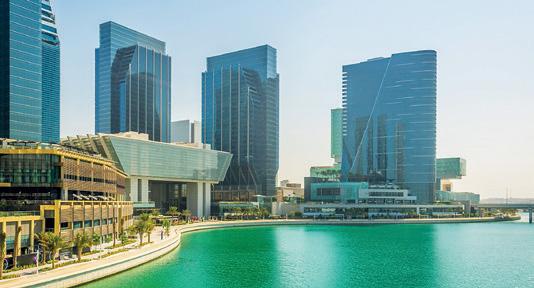
CONSULTANT
Hill wins 50,000-unit Al Fursan PMC contract
PROPERTY
Luxury marina community slated for Jubail Island
CONSTRUCTION
Digital District opens at Zayed Port
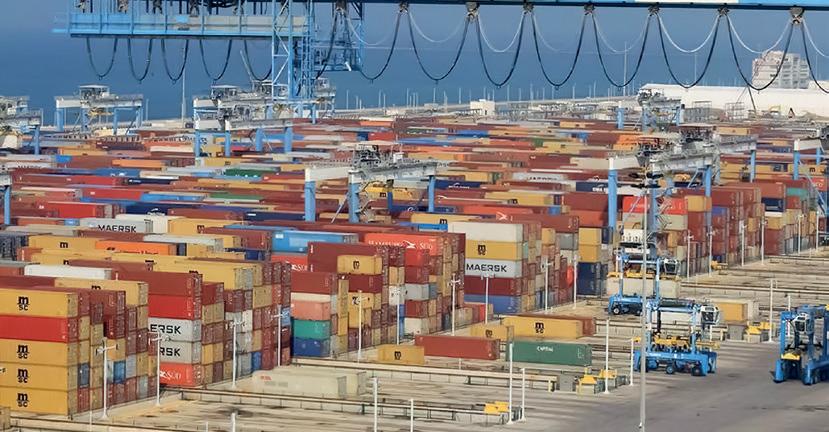
First phase of Digital Harbour project now complete and ready to offer a dedicated digital ecosystem

PROPERTY
Contracts awarded for DAMAC Lagoons development

Several consultancies have each been allocated a portion of the delivery of the masterplanned community
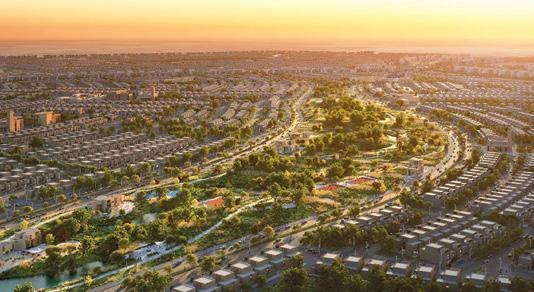
FINANCE
African Development Bank approves grant to boost Ghana’s use of renewable energy

PROPERTY
Meraas launches Design Quarter residential hub in d3
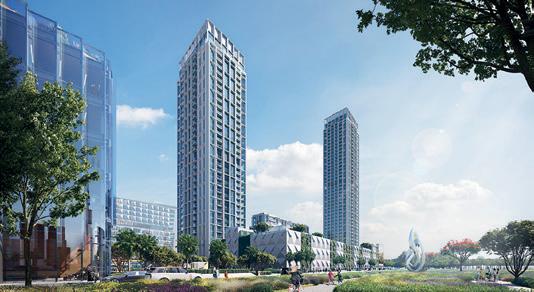
MIDDLE EAST
The firm foresees the economies of GCC countries to continue to record relatively strong rates of growth in 2023. Both the hydrocarbon and nonhydrocarbon sectors have seen strong rates of recovery over the course of the last year, with economic growth in the GCC region noticeably outpacing the global average during 2022. Over this period, economic growth in GCC countries recorded an average growth rate of 6.3% and as we move into 2023, their GDP growth is expected to reach 2.7%.
Saudi Arabia accounts for 64.5% of this total or some $877bn, followed by the UAE, which at $293bn, accounts for 21.6% of the total. Bahrain, Kuwait, Oman and Qatar share 1.7%, 4.4%, 4.6% and 3.3% of the total respectively. While this level of investment in real estate is a core part of a number of countries’ diversification strategies, the continued development and easing of regulations will be crucial in supporting these initiatives.
CBRE anticipates a positive outlook for the real estate sectors across the Middle East in 2023, as elevated oil prices and resolute economic growth are expected to support strong levels of occupier and investment activity, the firm says in its 2023 Middle East Real Estate Market Outlook.

This economic backdrop is expected to continue to provide the support required for regional economies to work towards their economic diversification targets. Real estate projects and associated sectors such as the hotels and industrial, logistics and manufacturing sectors will play a central role in this diversification drive.
The total value of real estate projects currently planned or under construction currently stands at an estimated $1.36tn.
Taimur Khan, Head of Research –MENA at CBRE in Dubai explains, “GCC economies and real estate markets, on the whole, are expected to continue to see performance levels remain relatively strong over the coming year, despite the weaker global economic backdrop. In the region’s key office markets, Dubai and Riyadh, with available supply being constrained, we expect rental rates to continue to grow. In other markets, a combination of subdued demand and excess supply will mean rental growth
The economies of GCC countries are expected to continue to record strong rates of growth in 2023 says a CBRE report
64.5% Saudi Arabia accounts for 64.5%, or some $877bn, of the total value of real estate projects planned or currently being built
is likely to remain anaemic. Residential markets in the region will likely see somewhat fragmented performance in 2023, supply gluts in certain markets will drive down performance, whereas lack of supply in key business hubs such as Dubai and Riyadh is likely to mean these markets will outperform.”

The company’s latest report details its 2023 Middle East real estate market outlook for multiple sectors:
In 2022, the UAE was the only residential market to record price growth and transaction volume growth across all cities and sectors. In Dubai, while we do expect transaction volumes to soften year-on-year, we expect that prices will continue to increase, across both the apartment and villa segments of the market, albeit at a slower rate. In Abu Dhabi, we are forecasting growth in both the volume of transactions and the rate of price growth over the course of the coming year.
In Bahrain, villa prices are expected to record low-single digit price growth. In the apartment segment of the market, given new launches and existing levels of supply, prices are forecast to decrease more substantially. In Saudi Arabia, price performance in both the apartment and villa market segments is forecast to become more polarised over the coming year. Villa prices are expected to continue to increase, albeit at slower rates, whereas apartment prices are likely to continue to soften. However, we do not anticipate this trend occurring in Riyadh, where the rate of price growth is expected to moderate.
Performance in the GCC’s office market was relatively upbeat over the course of 2022. In Bahrain, the prime and Grade A markets
saw rates remain stable. Despite new developments scheduled to be delivered this year, we anticipate the occupancy rate, which currently stands at 74.0%, ticking up and rental rates to remain stable. Occupier activity in Saudi Arabia will continue to be centred towards Riyadh, where the average occupancy rate sits at 99.0%. With a lack of existing supply and strong pre-leasing activity taking place in new projects which are not scheduled for delivery in the immediate future, we expect that rental rates will continue to increase in 2023.
In the UAE, Abu Dhabi’s office market will start to see increased levels of activity, which, alongside constrained levels of new supply, will underpin further rental growth. In Dubai, the current occupancy rate stands at 88.0%, up from 78.8% a year earlier. With a limited amount of new quality supply scheduled to be delivered over the course of next year, we expect that rental rates will continue to increase in all segments of the market.
In 2022, the GCC’s hotel sector recorded increasing visitation numbers, higher ADRs
and ultimately higher RevPARs. Given that this will be the first year without any pandemic-related restrictions, we forecast that KPIs will, by year-end, almost uniformly surpass 2019 levels. That being said, there will be headwinds for the sector to navigate, including but not limited to a slowdown in global economic growth, a strong US dollar and the materialisation of new supply. These factors will impact country and city markets by varying degrees.
In Bahrain, given the number of hotel openings in the five-star market segment, we expect that this sector is likely to see KPIs soften. In Saudi Arabia, the full-scale return of religious tourism will continue to drive occupancy in the Holy Cities and Jeddah. More so across the Kingdom, with the materialisation of luxury and ultra-luxury developments, we are also likely to see an uptick in ADRs.
In the UAE, although we expected occupancy rates to continue to increase, we forecast that ADRs will soften over the course of the year, which will put pressure on RevPARs. The beachfront luxury segment of the market is expected to continue registering outperformance, both in terms of occupancy and ADRs. After the FIFA World Cup 2022, unsurprisingly, we expect Qatar’s KPIs to soften amidst the dramatically higher supply and recently announced regulatory dynamics.

At the Berlin Energy Transition Dialogue (BETD) which was organised in March 2023, it was said that the global energy transition is off-track, and aggravated by the effects of global crises. International Renewable Energy Agency (IRENA) Director-General Francesco La Camera introduced the World Energy Transitions Outlook 2023 Preview at the event, which calls for a significant course correction in the energy transition. A successful energy transition demands bold, transformative measures reflecting the urgency of the present situation. Investment and comprehensive policies across
the globe and all sectors must grow renewables and instigate the structural changes required for the predominantly renewables-based energy transition, explained a statement from IRENA.

The Preview showcased that the scale and extent of change falls far short of the 1.5-degrees Celsius (C) pathway. Progress has been made, notably in the power sector where renewables account for 40% of installed power generation globally, contributing to an unprecedented 83% of global power additions in 2022.
But to keep 1.5-degrees C alive, deployment levels must grow from some 3,000GW today to over 10,000GW in 2030, an average of 1,000GW
IRENA has announced that there is an urgent investment need of US $35tn by 2030 in order for a successful energy transition to take place
annually. Deployment is also limited to certain parts of the world. China, the European Union and the United States accounted for two-thirds of all additions last year, leaving developing nations further behind, the statement added.
La Camera remarked, “The stakes could not be higher. A profound and systemic transformation of the global energy system must occur in under 30 years, underscoring the need for a new approach to accelerate the energy transition. Pursuing fossil fuel and sectoral mitigation measures is necessary but insufficient to shift to an energy system fit for the dominance of renewables.”
He continued, “The emphasis must shift from supply to demand, towards overcoming the structural obstacles impeding progress. IRENA’s Preview outlines three priority pillars of the energy transition; the physical infrastructure, policy and regulatory enablers and well-skilled workforce, requiring significant investment and new ways of co-operation in which all actors can engage in the transition and play an optimal role.”
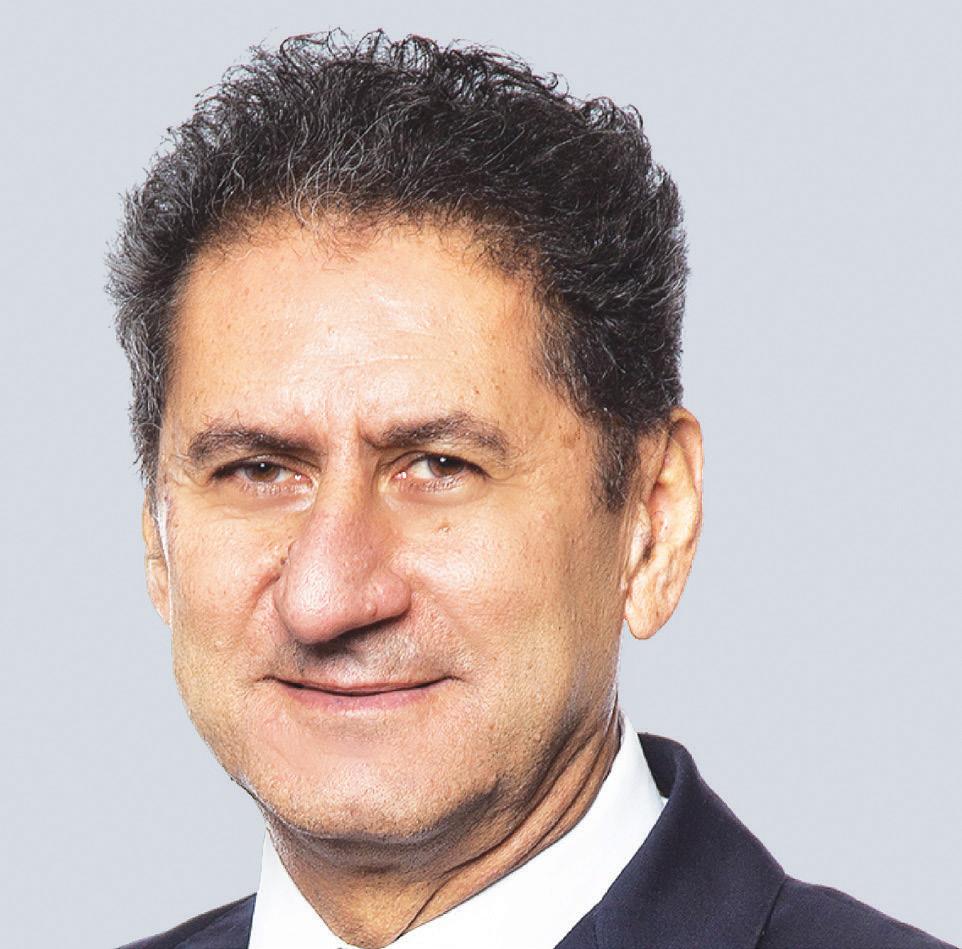
In addition, the Preview warned that a lack of progress further increases investment needs and calls for a systematic change in the volume and type of investments to prioritise the energy transition.

Although global investment in energy transition technologies reached a new record of US $1.3tn in 2022, yearly investments must more than quadruple to over $5tn to stay on the 1.5-degrees C pathway. By 2030, cumulative investments must amount to $44tn, with transition technologies representing 80% of the total, or $35tn, prioritising efficiency, electrification, grid expansion and flexibility, the statement elaborated.

Any new investment decisions should be carefully assessed to drive the transition and reduce the risk of stranded assets. It also noted that 41% of planned investment by 2050 remains targeted at fossil fuels. Around $1tn of planned annual fossil fuel investment by 2030 must be redirected towards transition technologies and infrastructure to keep the 1.5-degrees C target within reach, the organisation pointed out.
IRENA’s World Energy Transitions Outlook (WETO) provides an energy transition pathway in line with Paris Agreement goals, limiting global temperature rise to 1.5-degrees Celsius.
The 2023 edition of WETO will contribute to the first Global Stocktake concluding at COP28 in the UAE and will propose effective ways to accelerate progress over the next five years towards 2030.
The intergovernmental agency also said that public sector intervention is required to channel investments towards countries in a more equitable way.
In 2022, 85% of global renewable energy investment benefitted less than 50% of the world’s population. Africa accounted for only one percent of additional capacity in 2022. IRENA’s Global Landscape of Renewable Energy Finance 2023 report confirmed that the region is home to about 120 developing and emerging markets and continues to receive comparatively little investment.
La Camera remarked, “We must rewrite the way international co-
operation works. Achieving the required energy transition calls for far stronger international collaboration, including collective efforts to channel more funds towards developing countries. A fundamental shift in the support to developing nations must put more focus on energy access and climate adaptation.”
He emphasised, “Moving forward, multilateral financial institutions need to direct more funds, at better terms, towards energy transition projects and build the physical infrastructure that is needed to sustain the development of a new energy system.”
The stakes could not be higher. A profound and systemic transformation of the global energy system must occur in under 30 years, underscoring the need for a new approach to accelerate the energy transition”
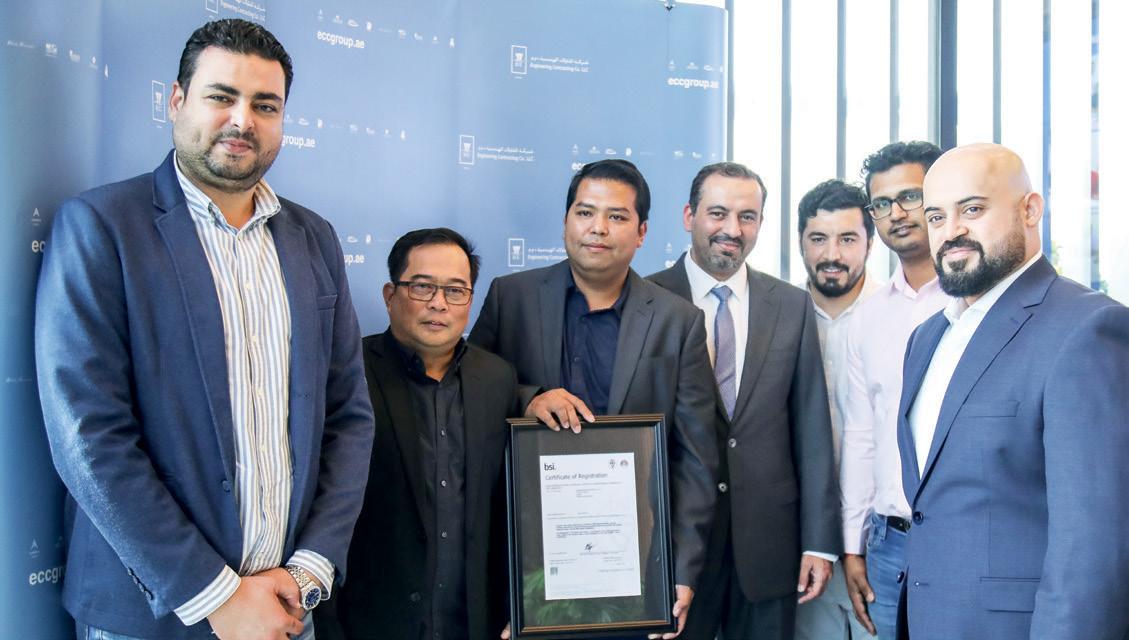
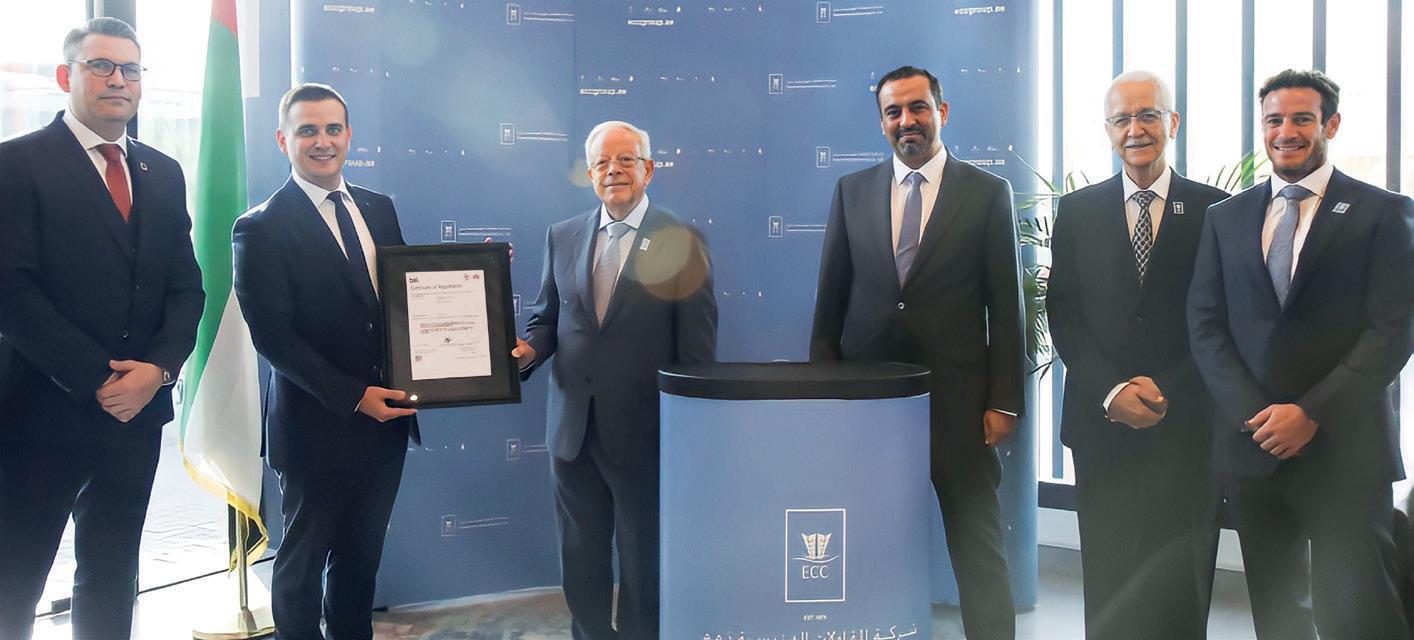

Anew added value was added to the record of the Engineering Contracting Company (ECC) as it culminated its journey as a pioneer in the field of contracting via the establishment of the flexible construction system that it started in 2018. The company has been approved by the British Standards Organisation (BSI) and the International Organisation for Standards (ISO), as the first contracting company in the Middle East and North Africa
that fulfills the requirements and standards required by ISO 18404, related to the requirements for the implementation of flexible systems in the facilities and the personnel supervising the organisation of the systems.
The company established a unique system in 2018, which sought to improve work practices and positively impact the company. These principles contributed to identifying and reducing waste factors, thus enhancing value for the customer. A flexible structure like this is usually adopted by manufacturing companies.
ECC succeeded in adopting these principles as one of its construction practices and was proactive in using them within this field.
As a result, the company recently celebrated obtaining the ISO 18404 certification, making it the first contracting company to be granted this certificate in the Arab region, the Middle East, and North Africa. Accordingly, a ceremony was held on 15 February, in the company’s central headquarters. It was attended by many personalities in the field of
engineering and contracting, as well as representatives from BSI. In the group, Engineer Samer Abu Daqqa, in turn, gave a presentation wherein he talked about all the steps and procedures that he followed with his team, the challenges he faced, and the mechanism of overcoming them by following a systematic and elaborate plan, which resulted in the company obtaining this distinction and appreciation from ISO. The ceremony concluded with the handing over of certificates and photography of the attendees.


A US $28.49mn grant for Ghana has been approved by the Board of Directors of the African Development Bank. The financing will enable the country to develop renewable energy infrastructure, with the goal of increasing its use of renewables by 10% through 2030.
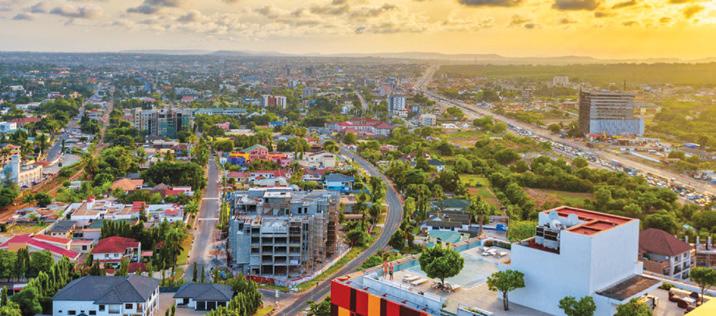
The financing will come from the Climate Investment Funds (CIF) – Scaling Up Renewable Energy Program in Low Income Countries (SREP), and will support construction of mini-grids, solar PV systems and battery facilities for storing excess power, a practice known as net metering.
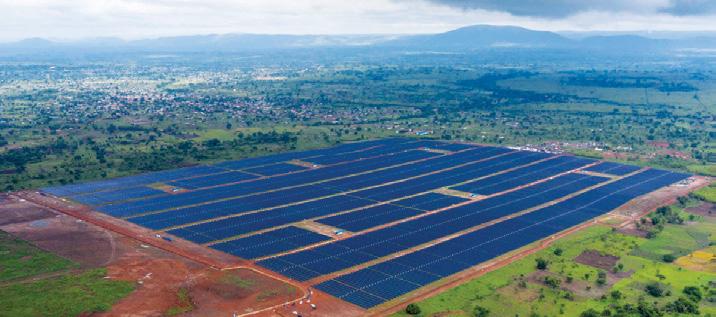
Renewable specialist AMEA Power has announced the official groundbreaking of Phase 3 of the Sheikh Mohammed Bin Zayed Solar Power Plant in the Togolese Republic. The groundbreaking ceremony was held in the presence of His Excellency Faure Gnassingbé, President of the Togolese Republic.
Located in the village of Blitta, the solar plant will be extended from 50MW to 70MW and will include a battery energy storage system (BESS) to prolong the availability of clean energy to the electricity network at night.
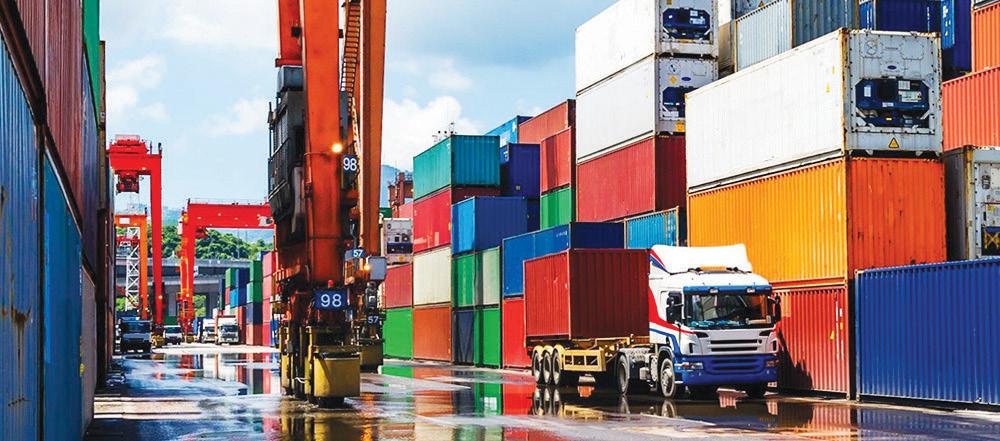
AD Ports Group has signed a 30-year concession agreement with the Red Sea Ports Authority to develop and operate a multi-purpose port in Safaga, Egypt. As per the terms of the deal, the Abu Dhabi-based group will be responsible for the development and operation of a multi-purpose terminal at Safaga Port, which is billed as a strategic location on the Red Sea coast of Egypt.
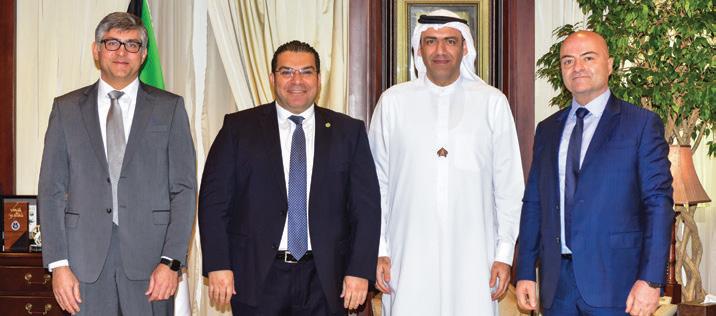
Safaga Port will be the first internationally operated port in the Upper Egypt region, bringing significant cost savings to traders, industries and businesses located in this region.
Kuwait’s Public Authority for Housing Welfare (PAHW) has appointed Egis to provide PMC services for the Al Mutlaa City Development (MCD) mixed-use megaproject.
Per the agreement, Egis will provide program-level service management, construction logistics & interface management, cost management, and digital PM system & PMIS for the MCD project.
MCD is said to be a housing city located 38.3km North West of the Kuwait Metropolitan area. It occupies an area of approximately 104sqkm.

Emirates Nuclear Energy Corporation (ENEC) has signed an agreement with Nuclearelectrica for cooperation within the nuclear energy sector.
The MoU provides both parties with an enabling framework for collaboration on the development and expansion of nuclear energy programmes in the UAE and Romania, as well as within Central and Eastern Europe.
The groups will assess potential partnerships in O&M support of nuclear plants, capacity building and human development, as well as R&D synergies.

AECOM has been awarded a multi-year contract to provide project management consultancy (PMC) services for Neom International Airport (NIA).
The new airport is set to be built within a large, futuristic city in the northwestern region of Saudi Arabia in line with Saudi Vision 2030.
The consultancy said the scope of work will include project management for master planning, design and construction services, through to testing, commissioning, operational readiness, activation and transition (ORAT).
A contract has been signed by Qatar Electricity & Water Company (QEWC) and GE Gas Power. It will see the latter company provide upgrades and maintenance services for a period of nine years to three of its 9F gas turbines, which are installed at the Ras Abu Fontas B2 (RAF B2) Cogeneration Plant.
The three units covered under the service agreement have a total generation capacity of up to 609MW, and equip one of the most important power facilities in Qatar, supporting the country’s electricity network.
08 UNITED ARAB EMIRATES
Two contractors have been appointed for the development of the Wynn Resort in Ras Al Khaimah by Marjan, which is developing the integrated gaming resort in partnership with RAK Hospitality Holding and Wynn Resorts. ALEC Engineering and Contracting (ALEC) was awarded the main contract for the construction of the integrated resort development, while Bauer International will undertake the piling and enabling works. The resort is now scheduled to open in Ras Al Khaimah in early 2027; when the project was first announced in January 2022, it was originally slated for delivery in 2026.
Aramco and JV partners Norinco Group and Panjin Xincheng Industrial Group plan to start construction of a major integrated refinery and petrochemical complex in northeast China.
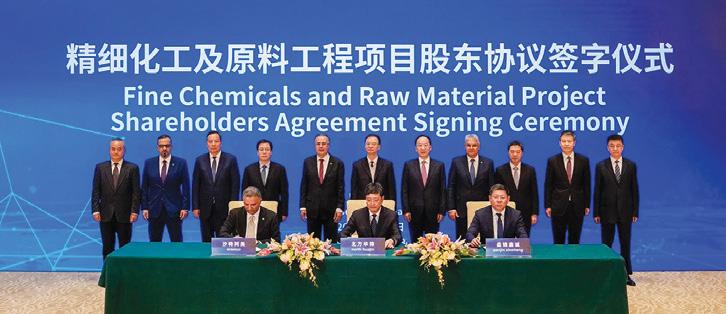
The complex will combine a 300,000 barrels per day (bpd) refinery and a petrochemical plant with annual production capacity of 1.65m metric tons of ethylene and two million metric tons of paraxylene.
Construction is due to start in the second quarter of 2023 after the project secures administrative approvals, with completion scheduled for 2026.

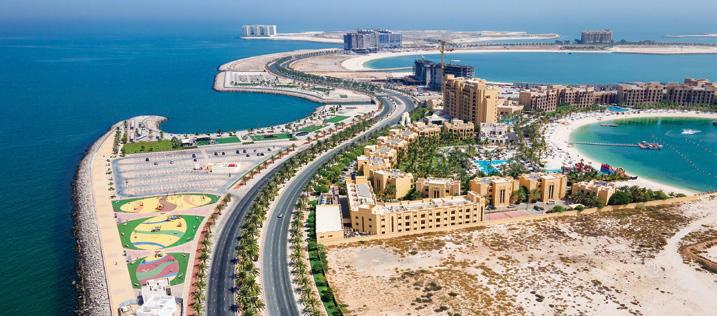
a record inflow of foreign direct investments (FDIs), as well as regional developers investing in critical infrastructure projects, highlighting a resilient real estate sector. While some developers have expressed optimism regarding favourable investment opportunities despite the current economic situation, others have chosen a wait-and-see approach until economic stability is re-gained in the country.
opportunities associated with decarbonising the construction sector and implementing real estate sustainability assessment. Many countries are currently focusing on their paths to Net Zero targets, which for MEA countries like the United Arab Emirates is 2050 and 2060 for Saudi Arabia. Moreover, Egypt has pledged to update its climate plan by June 2023, including a long-term strategy that explores a net zero target.
Geopolitical unrest in Europe, supply chain disruptions impacted by the COVID-19 pandemic, and macroeconomic volatilities have all caused headwinds across the construction sector, significantly increasing prices of construction material in Egypt.
Despite these headwinds and economic turmoil associated with the currency devaluation in Egypt, the value of projects awarded in 2022 represented around 21% of the total value recorded in the Middle East and North Africa (MENA), indicating a year-onyear spike since 2020. This was attributed to
In December 2022, the International Monetary Fund announced a support program of US $3bn under its Extended Fund Facility to preserve macroeconomic stability in Egypt. The support program intends to gradually reduce inflation and facilitate inclusive and private-sector-led growth.

During November 2022, Sharm el-Sheikh hosted the 27th session of the Conference of the Parties of the UNFCC (COP 27), with a view on building on previous climate change successes and paving the way for future ambition. Five key issues were addressed at the summit: nature, food, water, industry decarbonisation, and climate adaption.
Data collated from the MEA market suggests that the region has improvement
According to the Central Agency for Public Mobilisation and Statistics (CAPMAS), Egypt has welcomed approximately five million visitors during H1 2022, up from just 2.5m during the same period in the previous year. Looking ahead, Trading Economics forecasts that travel and tourism will account for 12% of Egypt’s total GDP by 2024, equating to up to 40m tourists.
Currently, Egypt’s hotel capacity is around 210,000 keys across 1,200 hotels, significantly lower than the country’s real potential. This highlights the market’s future construction development opportunities within the hospitality sector - which as of 2022, accounted for 6% of the total construction projects awarded.
JLL has collated market intelligence data to provide a review of the Egypt construction sector over 2022
Despite the currency devaluation in Egypt, the value of projects awarded in 2022 represented around 21% of the total value recorded in the Middle East and North Africa (MENA), indicating a year-on-year spike since 2020”
MIDDLE EAST
Our Middle Eastern region is at a tipping point, according to the latest Intergovernmental Panel for Climate Change (IPCC) 6th Synthesis report. The latest data shows that despite global action to reduce emissions and national pledges to achieve Net Zero, overall climate-warming greenhouse gas emissions are growing faster than mitigation and reduction efforts.
What this means for our region is after 2041 at the current emissions trajectory we could be seeing more than 100 days every year where temperatures are above 40 degrees, leading to a major increase in heatrelated mortality and heat-related

illness, particularly for people over 65. That is only 18 years away – which means many of us currently making decisions about the design, delivery and operation of our buildings will be entering the age group where climate change is more likely to harm our personal health.
The immediacy of the threat can be seen in the IPCC’s clear calls in this report for greater investment in adaptation as well as scaling up for financial flows to mitigation. The built environment in this sense lies at the heart of how we both slow the escalation of the climate crisis and survive the impacts we are already beginning to experience.
We are perhaps fortunate in the Gulf area that designing for heat
The wisest course of action is to build on the IPCC call to action and scale up efforts to improve our existing buildings and communities says Mario Saab, Head of Sustainability MENA at Cundall
After 2041 we could see more than 100 days every year where temperatures are above 40 degrees in the region
is part of our proud and distinctive architectural tradition. What we need to consider is the vulnerability created in recent decades through adoption of more energy-reliant approaches that are based on the extensive use of air conditioning to ensure comfort and wellbeing.
In the hotter future, where the region is also likely to experience more frequent periods of zero rainfall for 100 days or more at a time, being entirely dependent on mechanical cooling may not be the solution we need. Meeting the energy demand through renewable energy would mean significant investment and also institutional drive for action being applied immediately to ensure sufficient capacity comes online.

We also need to consider the cost of energy for households and businesses, given the IPCC data also shows there are likely to be major disruptions to our food supply, and World Bank data shows the cost of key agricultural commodities including sheep, goat and grains is likely to increase markedly.
The good news is the tools, knowledge and expertise we need to take up this challenge are already within our grasp. For example, we can retrofit
buildings to better manage energy and provide real-time responsiveness to conditions through smart systems. We can improve insulation, reduce building air leakage and invest in smart renewable energy microgrids and demand-response platforms.
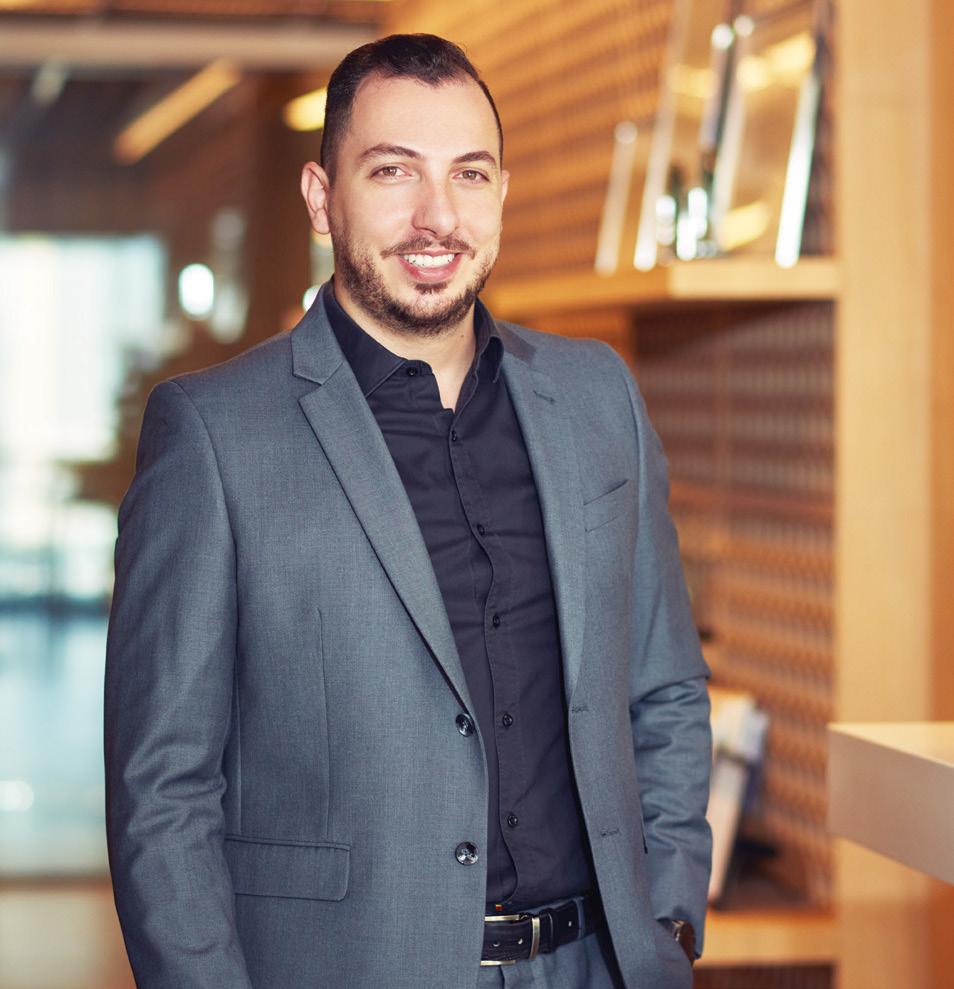
We can also retrofit buildings for mixed-mode ventilation systems that combine energy-efficient, smart cooling with age-old practices such
as the stack effect, night purging, strategic shading and the use of water features and urban greening for microclimate cooling benefits.
Our wisest course of action is to build on the IPCC call to action and scale up efforts to improve our existing buildings and communities, including the infrastructure that supports them, to build resilience, support adaptation and simultaneously reduce emissions.

The latest data shows that despite global action to reduce emissions and national pledges to achieve Net Zero, overall climatewarming greenhouse gas emissions are growing faster than mitigation and reduction efforts”



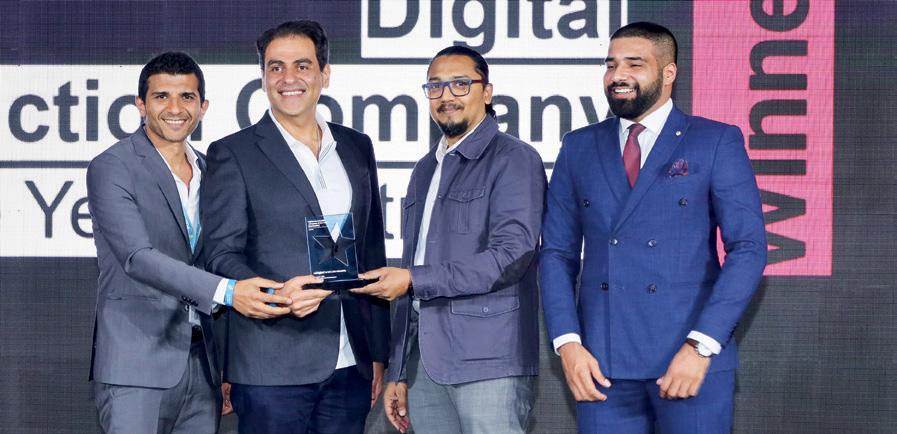

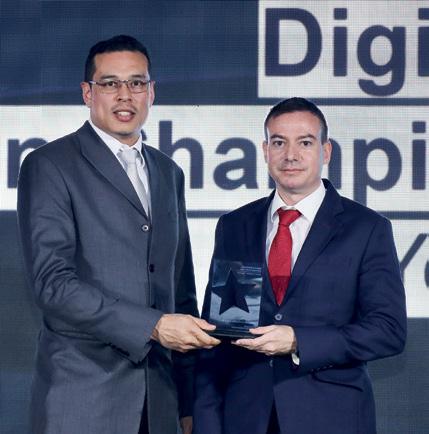
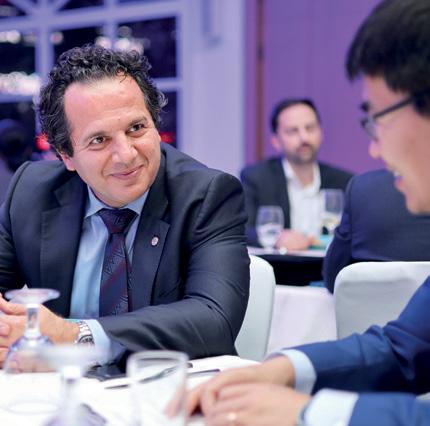
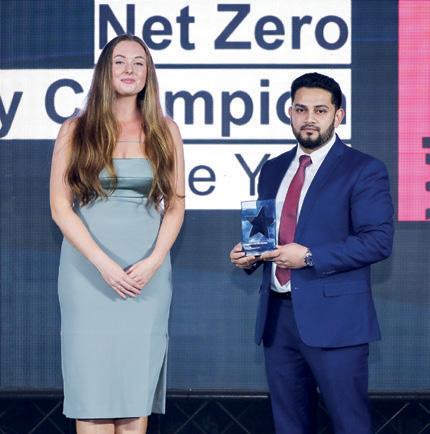


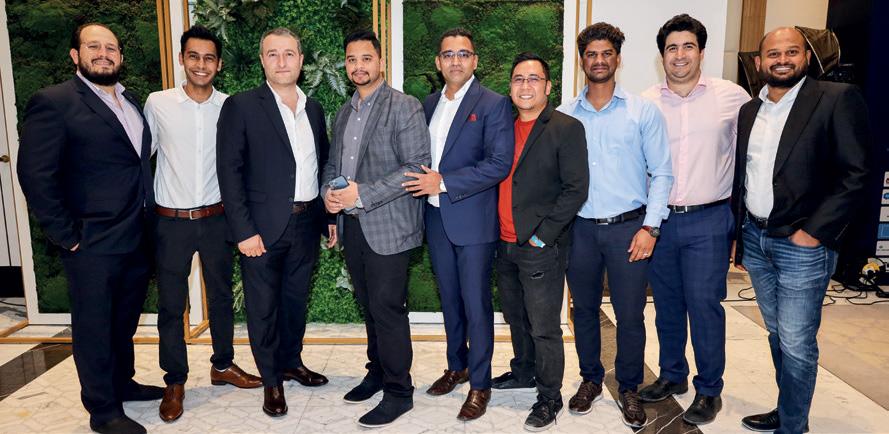
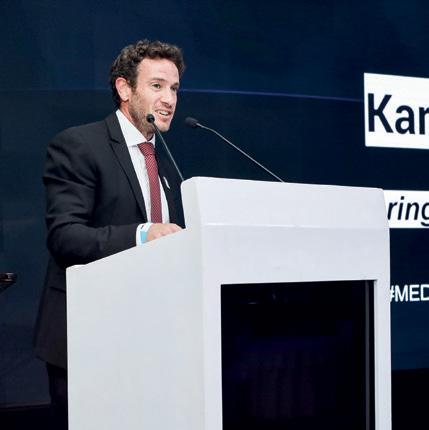

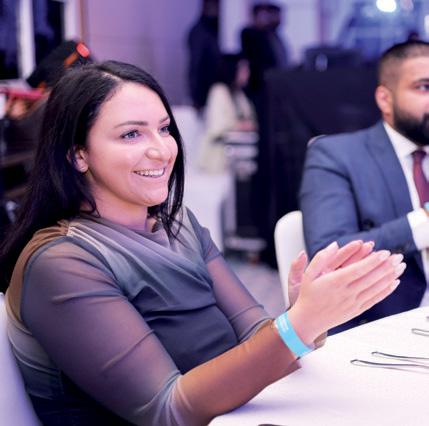

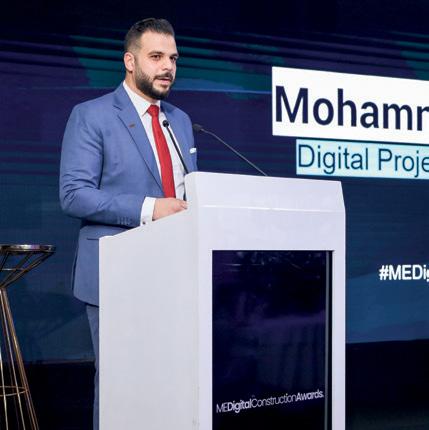

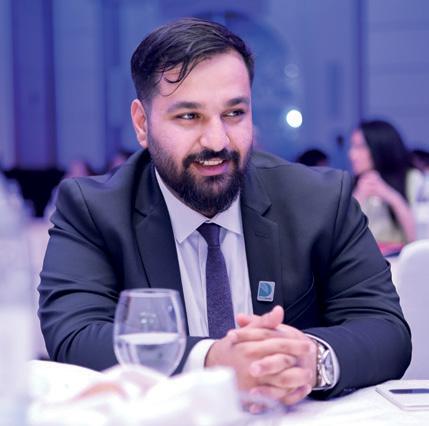


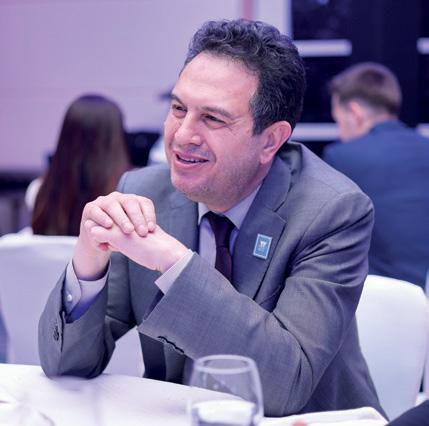


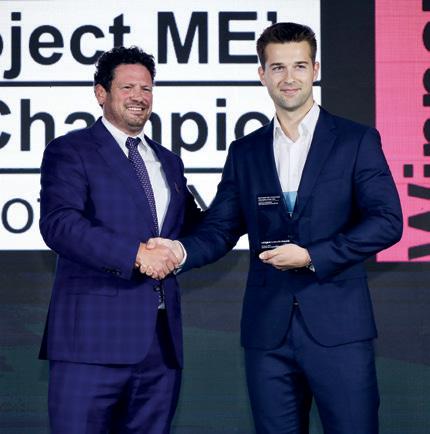

In response to the growing appetite for technology and the expansion of the market, the Big Project Middle East (BPME) editorial team launched the ME Digital Construction Awards to recognise excellence across the industry. The first edition of the awards was well received and drew nearly 100 nominations from across the Middle East across its 12 categories, which honoured companies, individuals and projects.
The gala event took place at the Habtoor Polo Resort in Dubai on 15 March, and was attended by over 100 personalities from the built environment. 12 awards were handed out on the night, while
attendees were also addressed by Kareem Farah, CEO of Engineering Contracting Company (ECC) and Mohammed Al Ktaishat, Digital Project Delivery Lead – ME at AECOM, who shared their thoughts on digital transformation and innovation. Prior to that, guests were welcomed to the event by Jason Saundalkar, Head of Content at Big Project Middle East
“The inaugural edition of the ME Digital Construction Awards surpassed our expectations in terms of nominations submitted and attendance on the night. Nearly 100 nominations were submitted across the 12 categories, and given the positive response and feedback we received following the event,
we’ve already made the decision to expand the awards’ scope in 2024,” explained Saundalkar.


The judging process was split into two parts – an initial process that saw the BPME editorial team vetting all the submissions to ensure they met guidelines and standards, and that they were appropriate for the focus of the categories. The second part of the process was an in-person meeting of all the judges in early March to discuss the nominations that made it through to the second round of eliminations.
The judges for the event included the BPME editorial team in addition to: Alex Albani, Professor of Architecture at American University of Dubai; Drew Gilbert, Design
Manager at OBM International, and Nicky Dobreanu, Branch Director at Omnium International.
“Taking into account the number of nominations that were submitted to each category, both rounds of the judging process required a lot of time and concentration. In the end, the judges did a fantastic job of identifying their first, second and third choice winners, which ultimately gave us our winners on the night. On behalf of the BPME editorial team, I’d like to congratulate all the winners again for their sterling efforts to put through compelling nominations, which made this edition of the digital construction awards a success,” concluded Saundalkar.
NOMINEES
Mateusz Lukasiewicz – KEO International Consultants
Mohammed Irfan Baig Mirza – ALEC Engineering & Contracting
Omar Ahmed – China State Construction Engineering Corp M.E.
WINNER
Mateusz Lukasiewicz – KEO International Consultants
KEO’s Mateusz Lukasiewicz was the first winner of the night, as the panel of judges thought he successfully demonstrated significant positive impact within his organisation and beyond in the realm of digital construction.
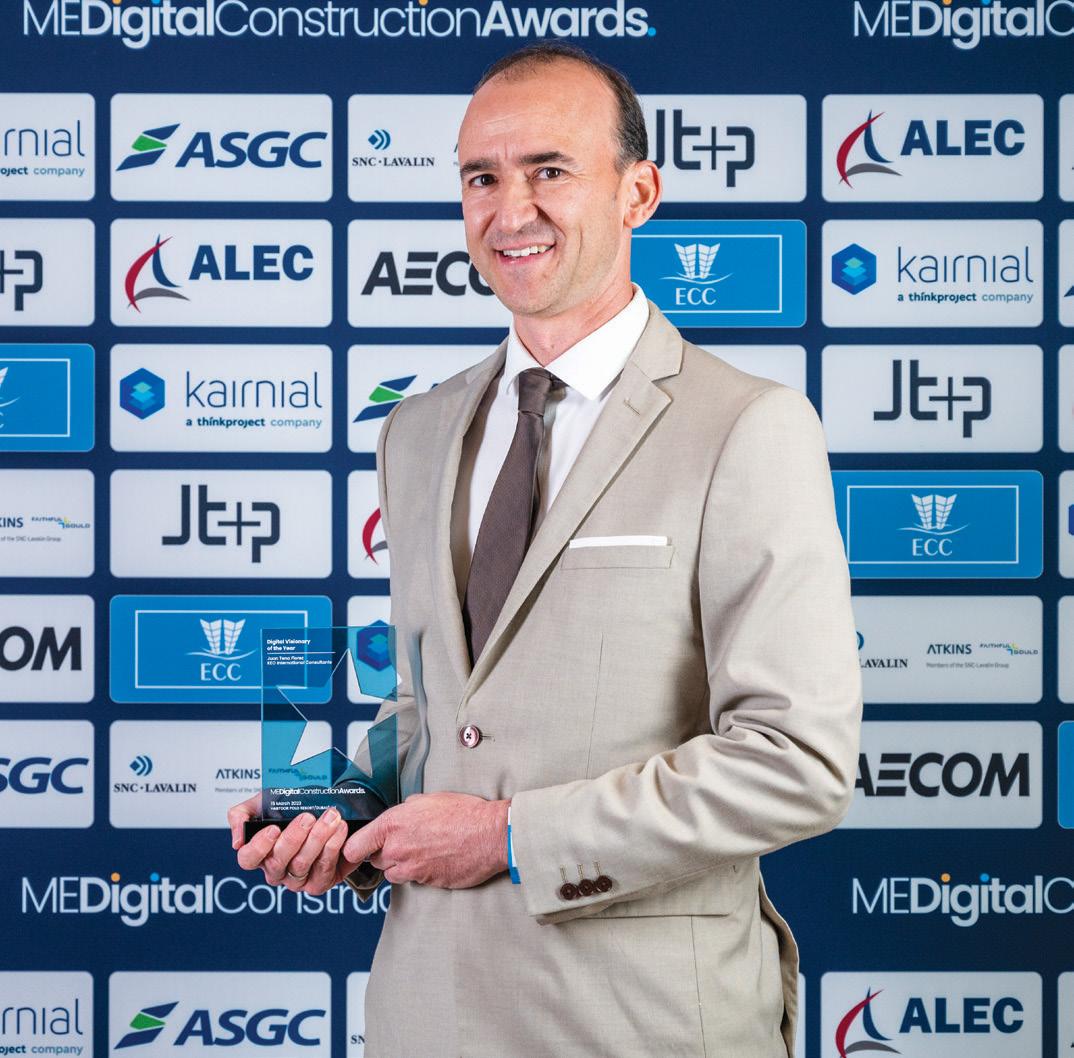

According to his nomination, he co-led KEO’s first digital twin project by using Autodesk Tandem and IoT solutions, increased profitability by optimising workflows and automating repetitive processes, and implemented cloud collaboration platforms to streamline stakeholder collaboration and break silos.

In addition, the judges commended him for his constant focus on training colleagues
within his organisation, as well as his consistent participation in local and global events focused on construction innovation and disruptive ideas. He stated, “I am proud to be selected as Technology Champion of the Year at the 2023 ME Digital Construction Awards ceremony. It is a significant recognition of my efforts in KEO International Consultants in driving innovation and automation. We are witnessing an ongoing revolution in the architecture, engineering and construction industry of leveraging big data by autonomous systems powered by artificial intelligence to improve project lifecycle KPIs.”
NOMINEES
Carolina Fong Guzzy – Accienta
Juan Tena Florez – KEO International Consultants
Mansour Faried – China State Construction Engineering Corp M.E.
Prakash Senghani – Navatech Group Limited
WINNER
Juan Tena Florez – KEO International Consultants
Five nominations were submitted to this category; however the judges made the decision to move one nomination from another category, as they felt it deserved recognition here instead. Due to the high calibre of individuals and the strength of each individual nomination, the judges also chose to recognise four nominees rather than three in this category.
Following spirited debate and voting, Juan Tena Florez from KEO International Consultants emerged as the clear winner for the judges for the second award of the night.
“I feel extremely proud and satisfied with this recognition
which highlights the amazing work I am leading at the Digital Advisory Services team at KEO. I look forward to continue working with the AECO industry to support the adoption of technology, processes and standards,” said Florez.
Commenting on what the next big trend in digital construction will be, he explained, “The next big trend in digital construction will be around the use of artificial Intelligence and virtual and augmented reality including the metaverse, as the industry makes better use of structured data and can support faster decision-making and analysis.”
Seven nominations made it through the first round of eliminations in the Excellence in Digital Planning and Design Implementation for the Year category, following which three were shortlisted. Tallying the results of voting saw ACCIONA through to victory with the most first choice votes.


ACCIONA’s nomination showcased that it had implemented a predictive model that leveraged satellite measurements and artificial intelligence to enable it to forecast the quality of water reaching its regional desalination plants. The cutting edge system enables its on-ground operations teams to have advanced warnings of any event that could potentially compromise operations, so
they can efficiently schedule activities (maintenance or otherwise) and manage energy consumption at the plants.
“ACCIONA is very grateful to have won this prestigious award. ACCIONA is putting its innovative and technical potential into action to create solutions to water scarcity, sanitation problems, access to this vital resource and increased demand. Digital innovation is part of ACCIONA’s DNA and it is very gratifying to see how the work done by the Operation and Maintenance team of the water business in the Middle East is recognised and valued by the regional industry,” noted Jesús Sancho, ACCIONA ME Director General.
This category recognises companies that have utilised technology to achieve sustainability milestones or Net Zero targets, and at the end of two rounds of voting, Facilio was chosen as the winner. The judges gravitated towards Facilio as it developed an AIdriven property operations platform that empowers real estate owners and operators to aggregate building data, optimise performance, and control portfolio operations from one location. Its nomination pointed out that its solution was deployed during the design-build stage of the tallest and largest LEED Platinum office building in the EMEA region to unify systems including BMS, elevators, fire, HVAC, and IT.
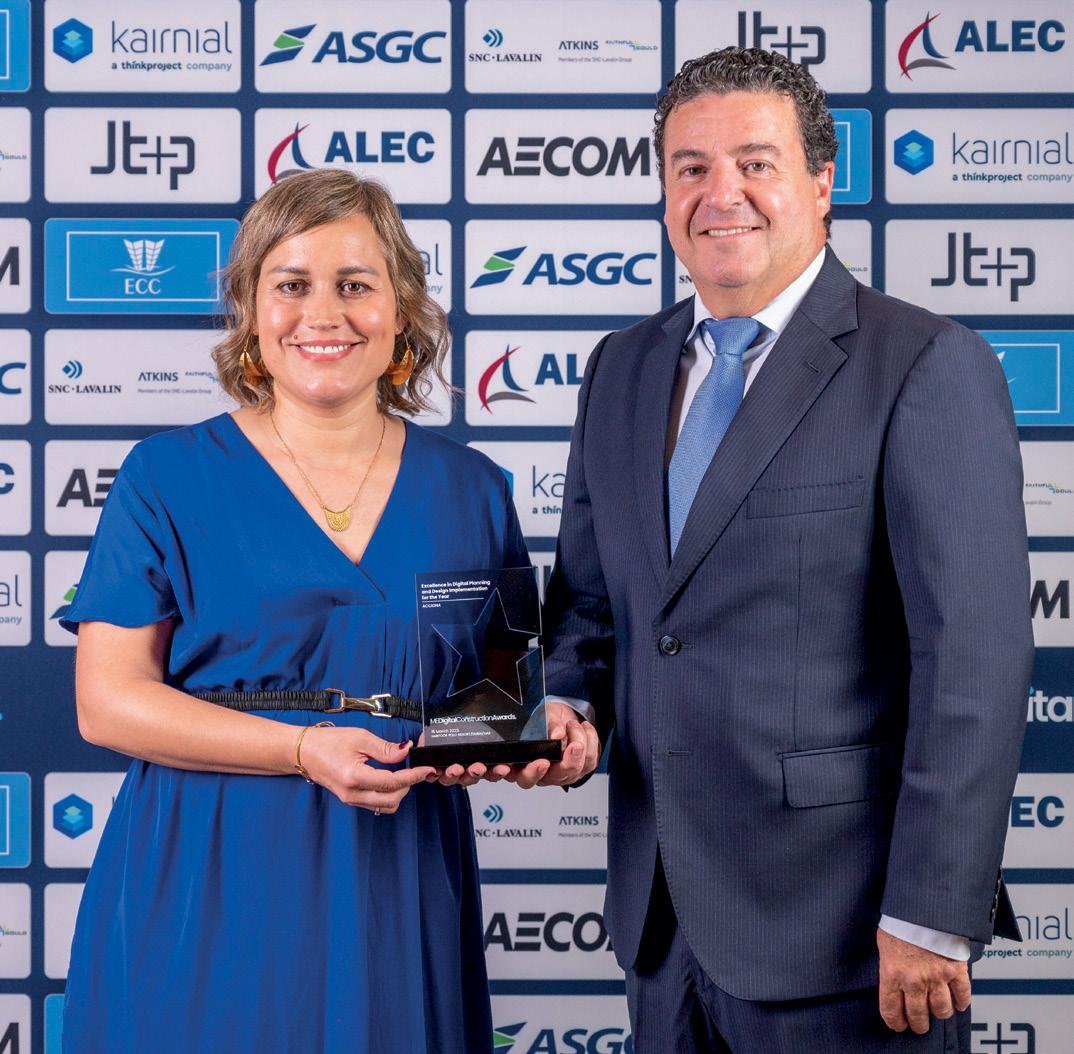
The company’s nomination also pointed out that its solution
enabled the project in question to realise optimal levels of operational efficiency that is on par with international standards, reduce energy consumption, achieve better equipment lifecycles, reduce manpower requirements and decrease operational costs.
“We are thrilled to have been awarded the Net Zero Technology Champion of the Year award at the first edition of this event. The future belongs to buildings that become operationally digitalnative. At Facilio, we are working with some of the most prestigious real estate brands in the UAE to help them adopt a data-driven and software-first approach towards achieving Net Zero,” remarked
 Mohammed Farazuddin, Business Development Manager at Facilio.
Mohammed Farazuddin, Business Development Manager at Facilio.

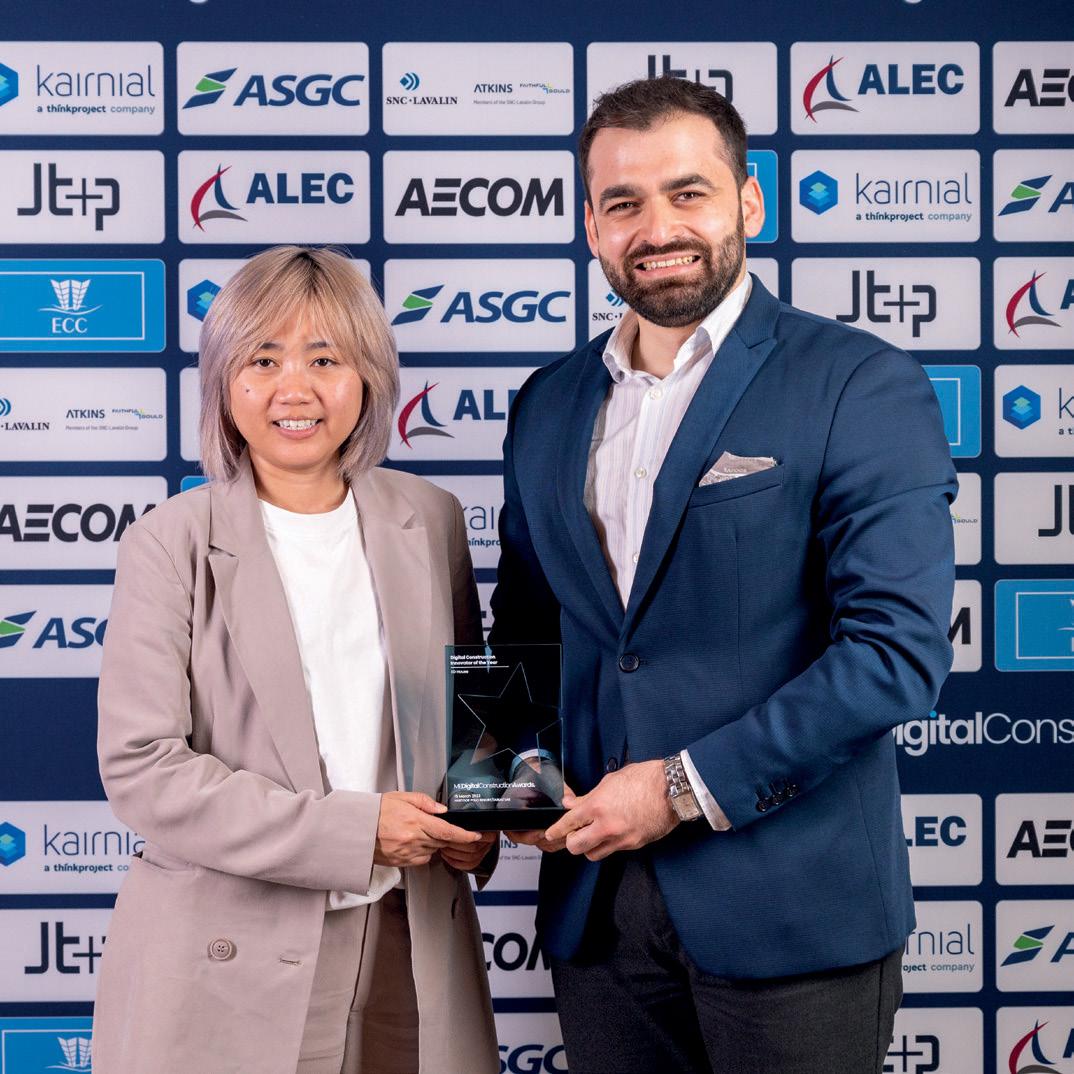
XD House garnered the most first choice votes thanks to a strong nomination that demonstrated its visible commitment to innovation, sustainability and social responsibility.
Focusing on algorithmic design solutions and standardised BIM workflows, the firm said that it has been able to boost efficiency and quality, while simultaneously reducing waste on projects. The judges noted that though the firm is young, it has already had a significant impact within the industry and on several regional projects. In one such example, through its use of automated visual scripts on the Kuwait International Airport project, the firm minimised waste
in the brass cladding process, which resulted in savings of more than five million dollars.
“I’m extremely grateful to the team and to our clients who helped us win this prestigious award tonight. As a construction technology consultancy we specialise in algorithmic design, and we bring a lot of automation and efficiency to projects by making processes more efficient, while also maximising the usage of resources. We look forward to enabling stakeholders to boost quality onsite and to making sure that their projects are delivered on time,” commented Anas Ayoub, Founder and Director of Digital Construction at XD House.
Four nominations made it through to the second round of eliminations, with Dewan Architects + Engineers scoring the most first choice votes to take the prize in this category. The company’s nomination highlighted a digital solution that encourages academia, government bodies, architects, engineers, material and product manufacturers and the community to interact and exchange ideas in a virtual world.
Describing its creation, it said that it is a formal adaptation and interpretation of life today, and is a modern metaverse where tower silos are created to provide a platform that connects digital communities to promote the

overall greater good and collective advancement of its members. Babel 4.0 is said to intentionally oppose style, location, culture and budget, and is instead a blank canvas for hybrid cultures, and exists to connect people from around the world.
“Winning this award is a testament to the work we’re doing; we’re really taking the digital process to the forefront of everything we do. Over the years things have moved from drawings to models and now clients are looking for data. As an organisation, we deliver it, and our clients are coming back to us because of it,” said Christopher Stock, Head Of BIM Operations at Dewan Architects & Engineers.

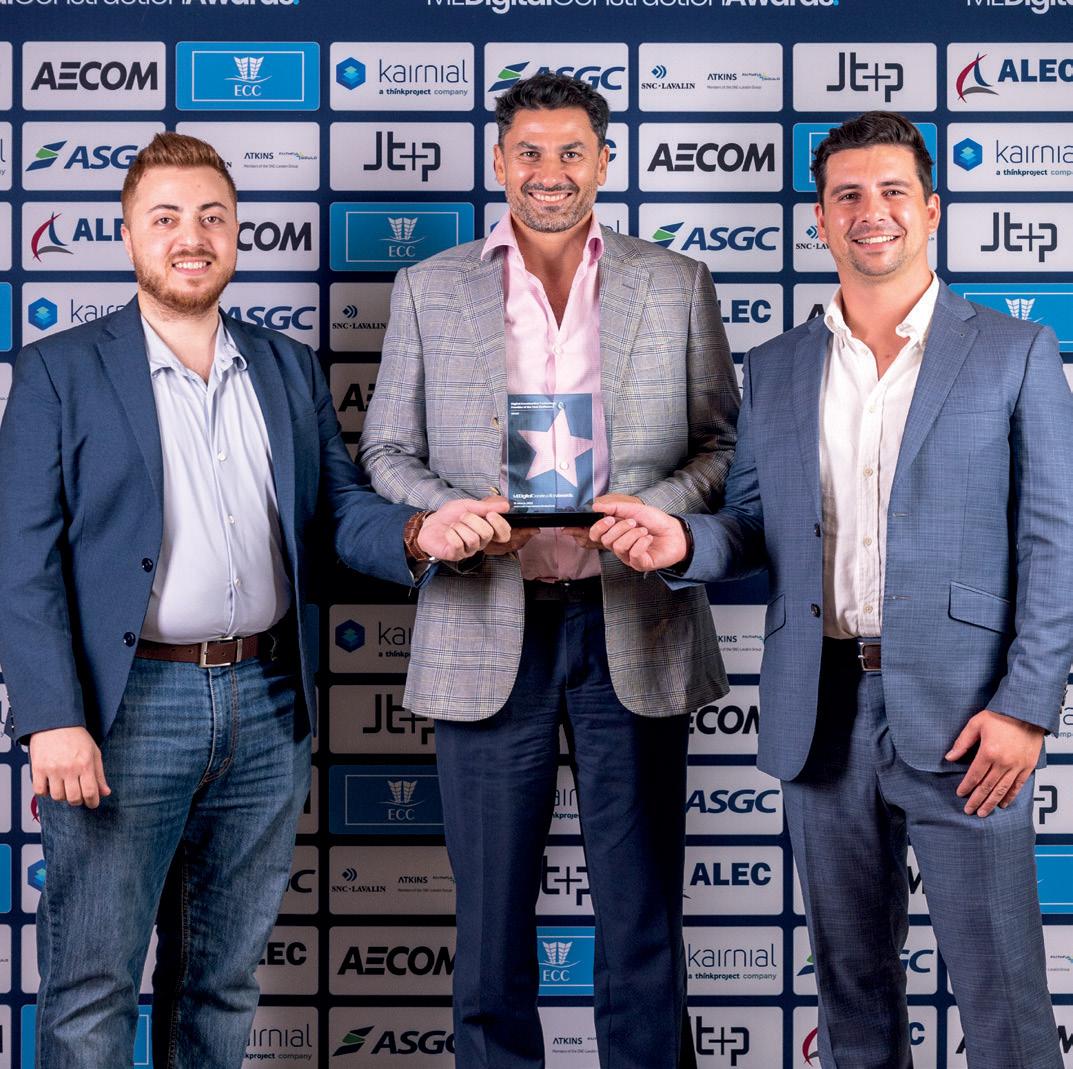


Accienta was announced as the winner of the Digital Construction Technology SME of the Year – the first award for the second half of the evening. The judges commended Accienta as a result of its focus on working closely with consultants, contractors and asset owners to enable their digital transformation journeys, and provided a number of services including BIM implementation, cloud collaboration, document management systems and process mapping. The firm’s nomination highlighted it firmly believes that digital transformation journeys are more than just software but rather a mix of carefully re-drawn processes
that comprise large volumes of data, workflows that best fit company needs, and digital tools to enhance daily processes, and deliver live and dynamic views, reports, and dashboards that enable collaboration and enhanced decision making.
“This is amazing, we’ve had a great night and I want to say thank you for organising such a great event. It’s an honor to be recognised here in front of so many other players in the industry. I have to thank the whole team for their incredible work, which helped us win this award. We are very excited and grateful,” explained Anas Elayyan, Operations Manager at Accienta.
Nine nominations were submitted for consideration, with six making it through to the second round of eliminations. Following intense debate, just three were chosen for the shortlist, with Mastt being given the nod by the judges.
Through its nomination, Mastt demonstrated positive achievements on the recent delivery of a US $133mn project in Saudi Arabia. The firm showcased how its solution transformed financial, risk and reporting processes, and led to significant time savings including: a 100% time saving on each cinema project in the program; a 57% time saving on monthly
reporting; real time dashboards that swapped monthly reports out in favour of live reporting, and a 50% time saving on project risk management. The nomination was further strengthened by positive customer testimonials.
“We are truly honoured to receive this award. It is a testament to our in-house engineering and product team striving to build best in class software, in a sector that has lagged in digital adoption for the most important stakeholders - asset owners and PMC’s,” remarked Matt O’Callaghan, Regional Implementation Lead at Mastt.
Three nominations made it through to the second round of voting, following which the judges voted on Engineering Contracting Company (ECC) as the winner.

The company’s nomination drew the judges’ attention as it detailed the delivery of a high profile office project in Dubai by leveraging 3D printing technology, while using only locally-sourced materials.
Working with the Dubai Municipality, ECC said it sourced a single 3D printer to deliver the entire structure, and painstakingly saw the project through to final completion.
To deliver the full scope of the project, the 3D printer had to be moved 18 times but the project still realised numerous benefits
including: reduced cement usage; minimal scaffolding and formwork; minimal wastage and scrap; enhanced safety; reduced sound pollution and many other benefits.
“We appreciate this recognition, and I think it’s mainly due to our uninhibited dedication to embracing advanced construction solutions to deliver projects – in this case 3D printing technology. We worked with the Dubai Municipality on this fantastic project, and are one of the first companies in the country to take on a project such as this. I think that’s at the heart of what we do – we’re always looking for challenging projects to take on and deliver well,” said
KareemFarah, CEO of ECC.
Thanks to a stellar nomination ALEC Engineering & Contracting’s nomination for the Dubai Hills Mall & Indoor Storm Coaster was unveiled as the winner of the Digital Construction Project of the Year category.
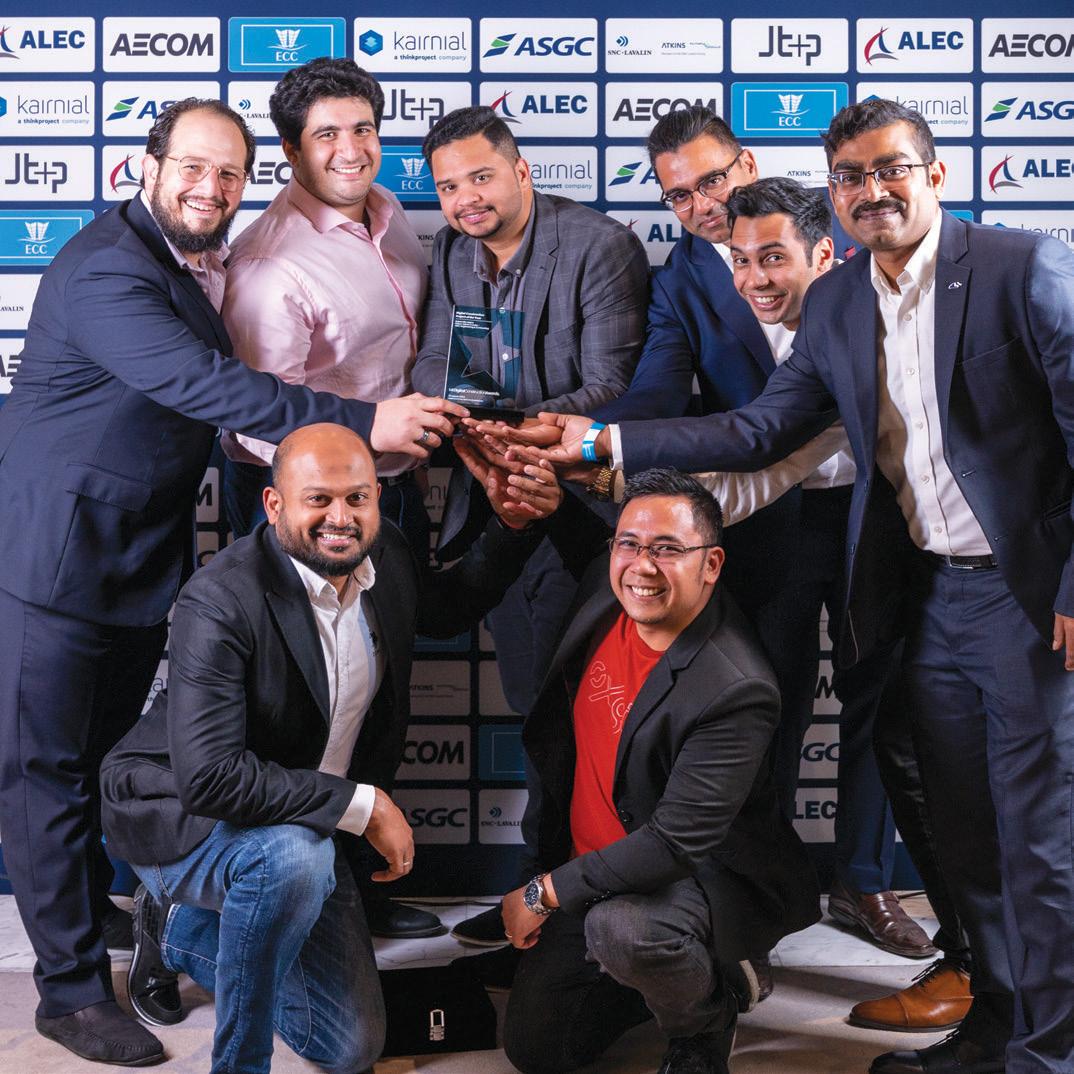

The judges said that while each project had significant merits, they upped their scrutiny and decided on one that could stand as a regional benchmark for other high-end retail projects to emulate. In the delivery of this destination, ALEC said it leveraged digital construction for a comprehensive overview of the project’s implementation and progress, identified and solved contradictions and
conflicts between construction resources and costs controls, and reduced project overspends, whilst protecting the supply of resources.
“With its expansive layout, extensive use of solar energy solutions, and of course its world-record setting indoor roller coaster – Storm – the Dubai Hills Mall has set new benchmarks for premium experiences in the retail segment. ALEC is proud to have expertly delivered on the unique construction requirements of this project that now stands out in Dubai’s competitive retail sector as a leading shopping and leisure destination,” explained Andy Boutle, Head of Digital Construction at ALEC.


AECOM
Dewan Architects + Engineers
The judges had to contend with six nominations in the second round of eliminations, with AECOM being announced as the winner. It’s nomination showcased its comprehensive digital transformation strategy, which aims to source, develop and implement faster, smarter and better solutions to address complex client challenges.
AECOM said it harnesses the innovation of its teams and partners, and leverages project knowledge to build automated design tools, and collaborative platforms that have already begun transforming the infrastructure sector through aggregation and the analysis of data.
“It’s an honor to have won such a prestigious award. We feel proud to see AECOM at the forefront of digital technology in construction. In a fast-paced market like the Middle East, I see technology and innovation being the two main driving forces for this industry. AI/ML, reality capture and computational design are key trends that help drive the industry forward and enables teams to break down silos and increase their agility in responding to project and client changes. I’m proud to represent AECOM in these events, they are vital in spreading digital awareness,” said Mohammad Ktaishat, Digital Project Delivery Lead – ME & Africa at AECOM.
Several first choice votes were cast in DuPod’s favour as a result of its 360-degrees approach to industrialising construction. Its nomination pointed out that while adopting modular construction addresses a number of existing project delivery challenges, the firm has identified obstacles that prevent it from going mainstream, and has rolled out Industry 4.0 strategies to ensure challenges are addressed.
Ihab Ramlawi, Managing Director, Co-Founder at DuPod, “We are humbled and honoured to receive this prestigious award. DuPod 4.0 is the solution to meet the market’s requirement
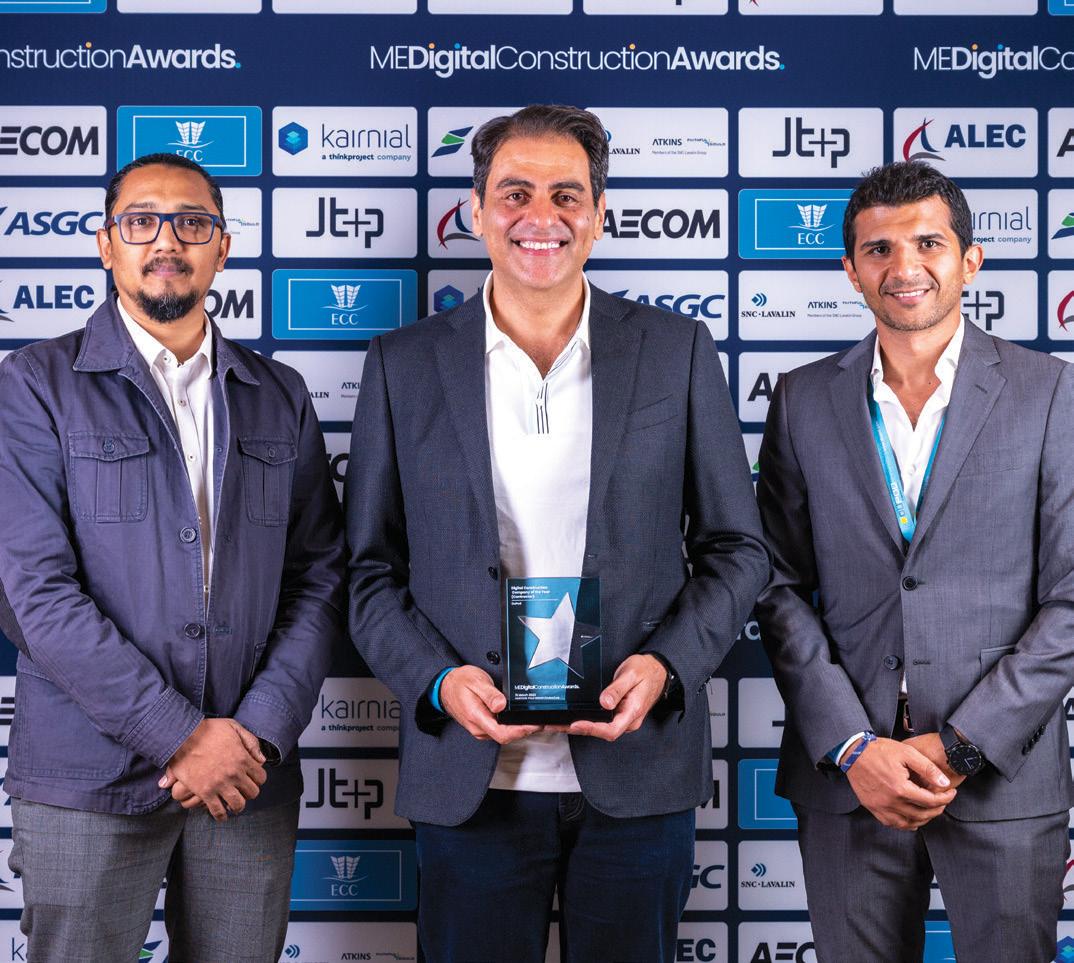
for digitisation and modular construction demand, while enabling the need to address the lack of modular know-how. This technology will allow complete networked manufacturing systems in DuPod future factories, and personalised manufacturing is an alternative to traditional linear production processes, such as mass production. Driving Industry 4.0 to the next level means complete transparency in smart factories as it evolves from a single machine-to-machine connectivity to real-time control smart supply chains, Big data generation and AI to drive productivity and efficiency.”

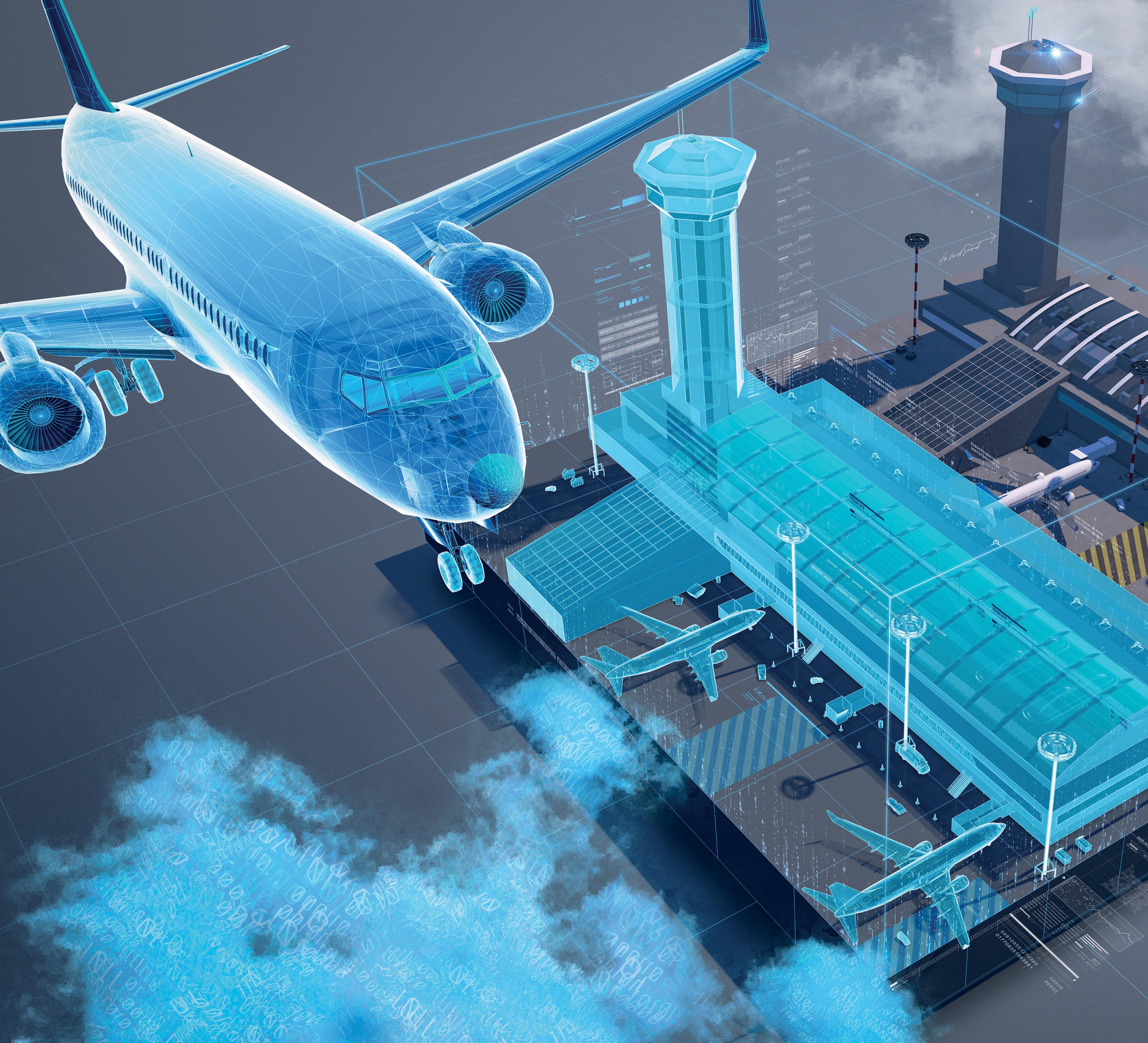
MIDDLE EAST
Supporting more than 87m jobs around the world, the aviation industry contributes well over 4% of global GDP. Working 24/7, 365 days of the year, our airports are critical links within the global transportation systems that connect countries, communities, and businesses.
Faced with changing demand, different operating conditions, and increasing costs, the quality of services that airport owners and their supply
chains provide is a crucial factor for the passenger experience. As travel restrictions are lifted and people’s concerns about flying slowly ease, many airports are congested, while few are over-built or have space to spare.
Aligned with other transportation owner-operators, airports are moving toward being ‘data-driven’ organisations, where access to trusted information, a clear understanding of the context of data being managed, and the impact of changes to it are critical to proper
Digital twins and the processes they enable must be embraced to deliver the improved business outcomes demanded in our changing world says Bentley Systems’ Steve Cockerell
decision-making when working to deliver efficient operations, timely expansion of existing facilities, or new airports.
With this complex set of challenges, owners and their supply chains must remain agile and responsive. In this dynamic environment, future-ready technology including digital twin solutions will be key.
The huge volume, diversity, and maturity of data that exists - and, therefore, needs
to be managed across the lifecycle of assets, processes, and systems within an airport campus - is an indicator of the size of opportunity harnessing it and the technology that digital twins provide. However, with much of that data residing in siloed systems, the ability to manage, access, and validate the different data types and sources involved is a significant challenge. This task often requires multiple tools, which can present the organisations and teams involved with IT headaches and ongoing costs way beyond those directly linked to their primary role of transporting passengers and/or freight around the world. Compounding this situation is the reality that the teams working across any airport are made up of a diverse mix of technical and commercial expertise. Engineers and surveyors responsible for delivering new or maintaining existing infrastructure assets will be familiar with terms like BIM and construction simulation, as well as being used to handling GIS data and 3D modeling. But for retail or property managers, as well as those within the C-suite, it can be like a foreign language. Therefore, it is important that every user, regardless of role or function, can lay their hands on data they can trust, in a way that makes sense to them and the task at hand.
As the world becomes more digitally connected both the size of the challenge and the opportunity to deliver improved business outcomes increases exponentially.
So, is data the cause or the cure?
Like all kinds of digital tools and technology, overcoming the types of data challenges that I have highlighted is only a means to an end. However, when coupled with the latest in data analytics and computer simulation through digital twins, users gain the increased visibility and insight that they need to improve decision-making across all aspects of the airport lifecycle, and for every one of the disciplines and stakeholders involved, including members of the public.
To explore the potential that airport digital twins provide, it is important to first understand what a digital twin is. For many, the default definition of a digital
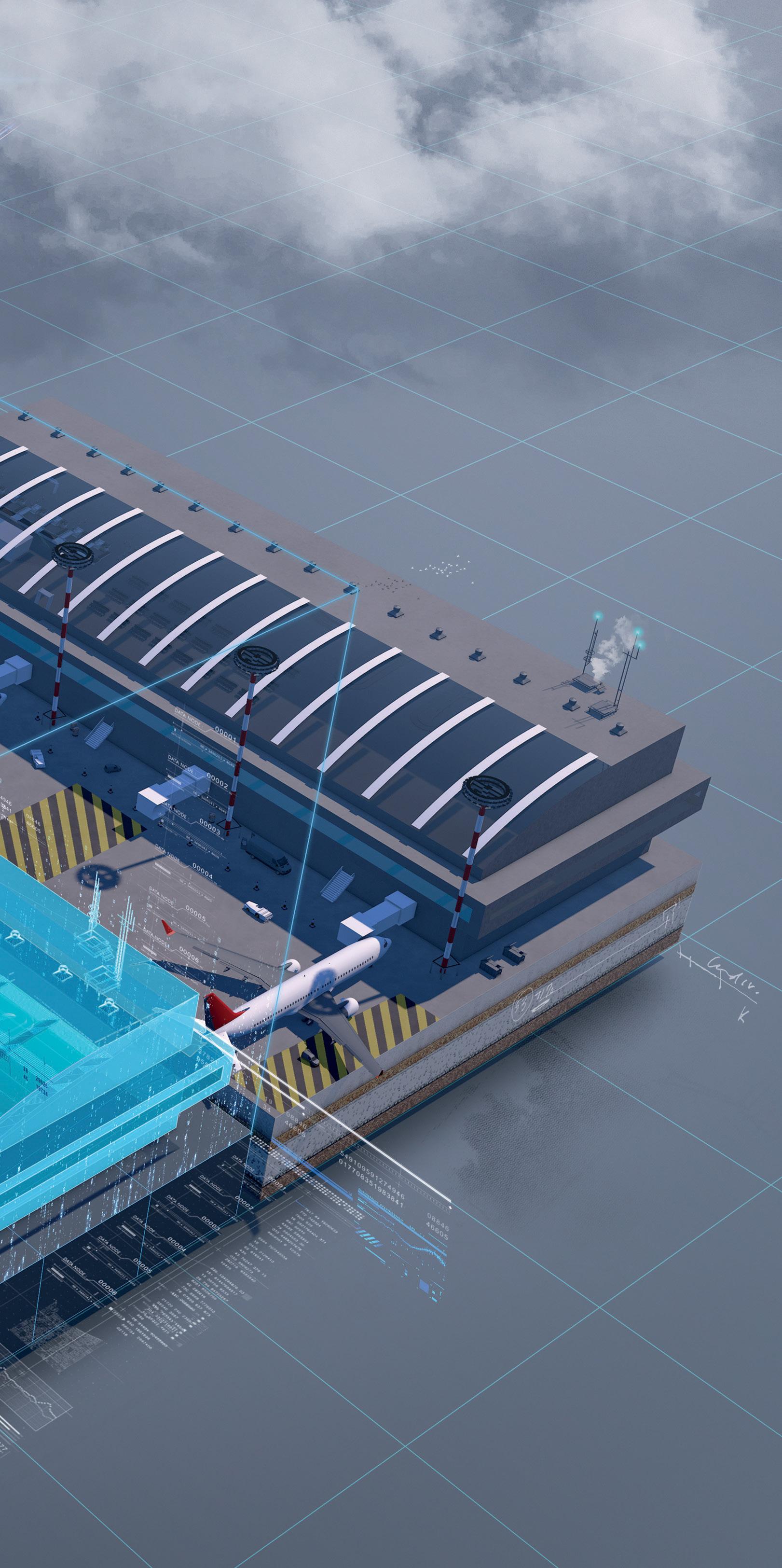
twin will be a 3D model of a physical asset, for example a runway, terminal building, bridge, or tunnel. However, without a connection between the digital version and its physical counterpart in the real world, it is only a digital snapshot of the asset at a given point in time.
In this scenario, whether that snapshot is a model, a report, maintenance record, or set of operational instructions, the users of this information run the risk of it being out of sync with the other, resulting in rework, delay, and/or increased cost. In addition, they also lose the ability to see the information behind the asset’s design, construction schedule, or historical maintenance, and cannot use that valuable insight to enable better decisions.
Bentley defines a digital twin as a realistic and dynamic digital representation of a physical asset, process, or system in the built or natural environment. A digital twin, therefore, connects the physical and digital worlds, so that the digital dynamically reflects changes in the physical, representing its physical counterparts near or real-time status, working condition, or position.
Moving beyond the BIM workflows and standards that have become common place over the past 20 years, and due to the number of assets and disciplines involved across the lifecycle of an airport campus, it is that connection between the physical and digital worlds that really makes the difference.

None of us ‘know what we don’t know’, so with the different types and amount of data, plus technology evolving so fast, it is very difficult to predict what a digital twin of an airport will include or might enable in the future. However, I think that we can pick out some of the key phases of the lifecycle, and look at the experience of other industries, to have a go.
For example, imagine if, as an airport planner, you could simulate future traffic flows and/or pedestrian movement, on related transportation assets or within proposed terminals, to inform and optimise the location and design of new facilities.
If your multi-discipline design and engineering team could collaborate
seamlessly wherever they are located, they could exchange data to explore different alternatives, simulate and optimise construction schedules, and then hand over ‘constructionready’ data to contractors on site.
Taking it a step further, digital twins already help monitor the delivery of road and rail projects, so it is not a huge leap to expect project managers using them to track progress on site across an airfield to ensure that ongoing works do not adversely impact operations or put airport users at risk.
Moving to airport operations specifically, imagine if maintenance engineers could remotely monitor runway pavement deterioration, including looking at trends in the data and using machine learning to look at cracks at risk of becoming unsafe, and then use that data to target resurfacing work in the right place at the right time.
While these scenarios might seem like they are use cases for enabling the airports of tomorrow with digital twins in years to come, the reality is that they are all possible today. To realise the full potential of digital twins in an airport scenario, we should also look beyond the boundary of the airfield, at related infrastructure assets - for example, at the rapid/mass transit system serving it.
Here, digital twins may already be helping track maintenance engineers to optimise budget and resources, to improve service, safety, and reliability. However, as part of a connected ecosystem of digital twins, visibility of data in the railway’s digital twin could inform airport operations managers when the network is becoming congested or out of service, with the potential to put the timely arrival of passengers, and departure of flights, at risk.
Using proven technology with data owners already own, as well as leveraging workflows that they rely on to deliver current service levels, the availability of digital twins means that at anytime, anywhere, their users can view, monitor, and gather the insight they need to let the data drive better decisions. Decisions that can lead to greater efficiency, reliability, safety, and sustainability, as well as enhancing the customer experience for users of the airport campus.
As demonstrated through our Going Digital Awards entries in recent years, the evidence that the benefits of digital twins far outweigh their cost - particularly when calculated across an asset’s whole life - is getting clearer all the time.
In this year’s Facilities, Campuses, and Cities category, Sydney Airport is a finalist with Maps@SYD, and describes instances where the use of digital twins is saving time and resource hours, improving productivity, design efficiency, and the quality of deliverables, and reducing costs.
One of the oldest airports in the world and Australia’s busiest, Sydney Airport is situated on 906ha in Botany Bay. Home to three runways, three terminals, and over 400 buildings, the team at Sydney Airport has started its journey toward the development of their digital twin using Bentley’s OpenCities, known internally as Maps@SYD.
Promoted as the ‘Google Maps’ of Sydney Airport, Maps@SYD is a gateway to historical and real-time data from multiple sources, providing its over 200 current users with a comprehensive picture of the airport campus, without the need for specialised software on every computer across the organisation.
Using Maps@SYD, project managers have instant access to all developments, current and planned, together with the ability to overlay flood studies, environmentally significant areas, and
heritage sites, helping them understand the potential impact on proposed work, and saving the spatial team around 65 resource hours per week.
Maps@SYD can overlay data from financial applications onto GIS data, giving the airport’s commercial leasing team visually intuitive and up-to-date access to tenant names, lease expiry dates, sales per square meter, and liquor license details, eliminating the need to visit the digital print room or request data from the spatial team.
Maps@SYD has also enhanced workflows for regular audits of firefighting equipment, flight information screens, and confined spaces. Previously contractors recorded information on paper during walkthroughs and uploaded these into CAD files, which could introduce errors.
Today, audits are conducted using tablets, with information updated directly in the spatial information system, reducing the time needed for standard audits from 133 hours to 56 hours.
If digital twins are to be part of the ‘new normal’, then every organisation needs to invest in, as well as have a clear strategy for, their adoption and deployment soon. As with previous examples of disruptive technology, those that do not invest in making and managing this digital transformation look more likely to fail.

Digital twins and the processes they enable must be embraced to deliver the improved business outcomes demanded in our changing world, and, while I recognise it is early days for many, it is clear in my mind that alongside many other infrastructure sectors, with our users leading the way, they will re-write the way we plan, design, build, and operate our airports of tomorrow.
Harnessing data and technology through digital twins to improve how we work and what we deliver across every phase of the asset lifecycle will not always be a straightforward process.
Digital twins are the next big digital disruption in our industry, and that disturbance is happening right now for airport owners and their supply chains around the world.
4% Supporting more than 87m jobs around the world, the aviation industry contributes well over 4% of global GDP

Ahead of International Women’s Day 2023, Big Project Middle East caught up with Adelaida Fernandez, ACCIONA Project Director at the Jubail 3B RO desalination plant to discuss what inspired her to join the built environment, key career milestones, challenges, her thoughts on how the glass ceiling that exists for women in many companies can be shattered, and the progress of construction at Jubail 3B.

What drove you to get into construction and your first role in the industry? What were some of the influences that set you on your path?
As an engineer, I was always fascinated about the idea of designing and creating things that could have a positive impact on society and better the peoples’ lives. During my career I have been inspired by
many mentors, managers and colleagues that had the same vision and goals.
Share a brief about your career, mentioning key achievements. I have a Master’s Degree in Civil Engineering from Cantabria University in Spain. During the first ten years of my career, I was involved in designing and executing infrastructure projects in Spain, such as highways, high-speed train railways, and water infrastructure, including potable and wastewater treatment plants.
In 2013, I started my professional career overseas, working as a Construction Manager and then as a Project Manager and Project Director in three natural gas power plants in Manchester: UK (Carrington Power Plant), and Dubai (Jebel Ali K3 and Aweer Phase IV Power Plants) for Dubai Electricity and Water Authority (DEWA).
Due to the lack of women in the industry, many women don’t think the sector might be a professional opportunity for them, and this is where we must act to change this misconception says ACCIONA’s Adelaida Fernandez
I recently moved into the water business in Saudi Arabia as a Project Director for Jubail 3B RO Desalination Plant.
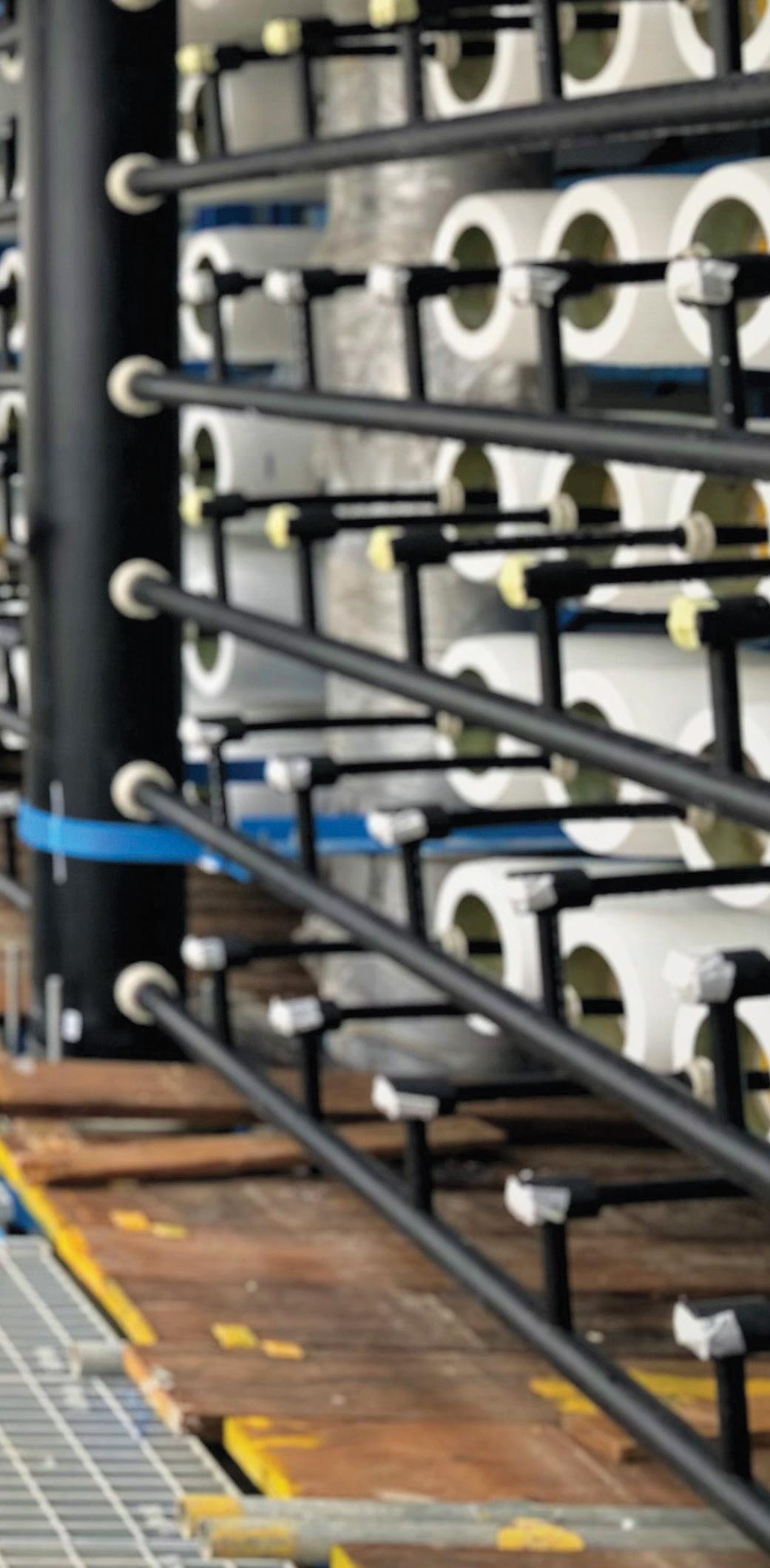
Besides fairness and being the right thing to do, diversity in the construction industry is important because of the value women can bring to employers, clients and customers. How have you made your mark in the industry working on projects and what is your proudest moment?
Women have a different way of doing things, managing teams, and making decisions that from my perspective, improves the traditional way of the industry. In addition to being able to achieve targets and successfully deliver these projects that are always essential for communities (as they secure a potable water supply), what makes me feel even prouder is supporting
and helping other people to develop, so they accomplish their goals.
What are some of the barriers to women entering the construction industry?
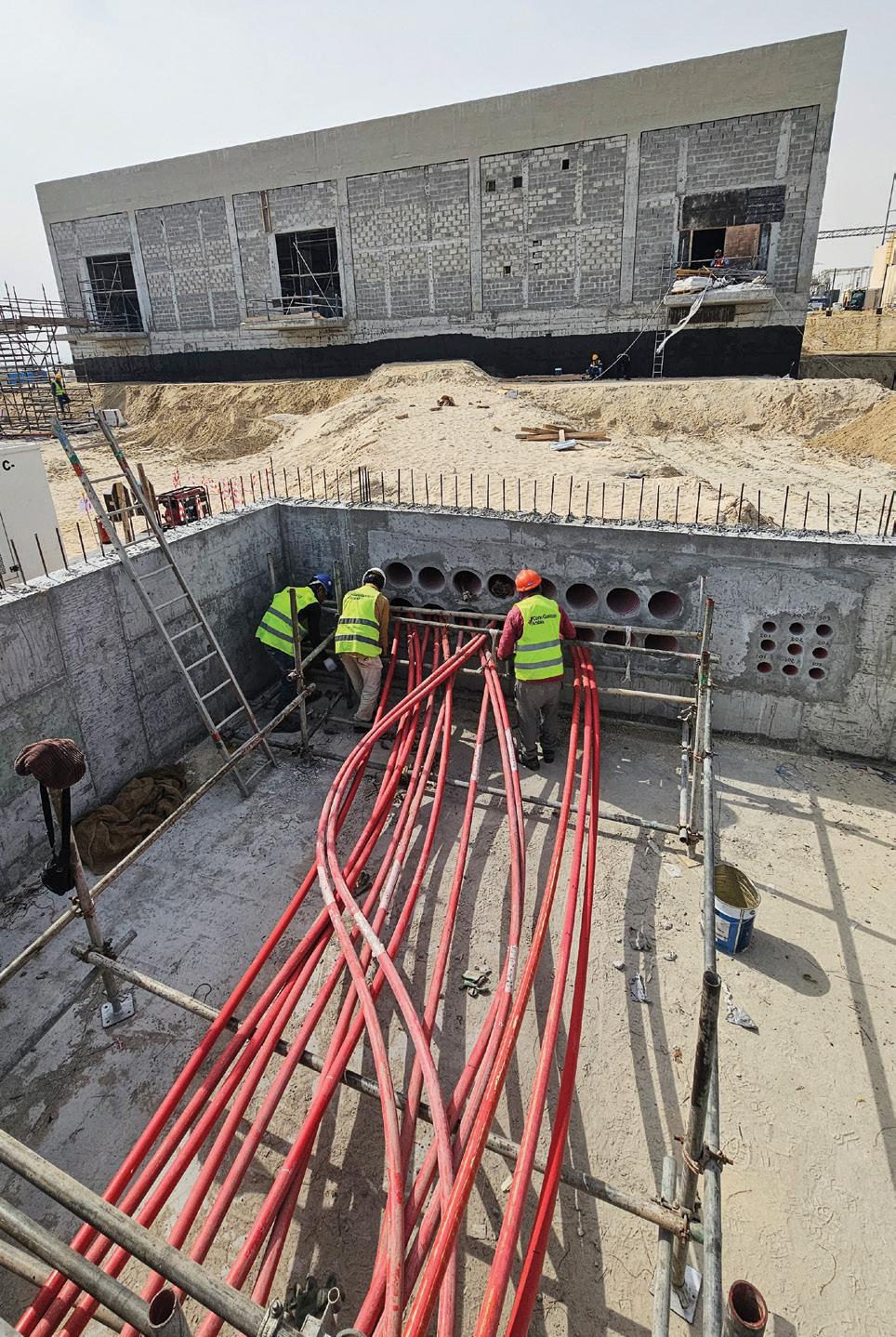

The first barrier that women in this industry face is the scarcity of women –even nowadays, in most projects I’ve been involved in, there’s not a single woman in sight. Due to this, many people see it as very unusual to deal with a woman in this business, moreover in a managerial position. My personal experience has not always been easy but it has been positive – I must say that I have feel respected and treated equal to my male colleagues. Due to the lack of women in the industry, many women don’t think that the construction industry might be a professional opportunity for them, and this is where we must act to change this misconception.
The GCC construction sector is still male dominated, however diversity is beginning to increase. If you agree with this, comment on what is driving this and how you see the GCC markets changing in the coming years? If you do not agree with the statement, please share your thoughts/views of the market. Undoubtedly, the progressive engagement of women into the construction sector is a fact, also in the GCC and this process will accelerate in the coming years. This has been driven by the generalised access of women to the labor market in all sectors including construction but it still requires support and dedicated actions by government authorities and construction firms.
Everyone has a part to play in diversity and equal pay. What would you like to see government authorities and construction firms do to increase diversity and make pay a level playing field? Increasing diversity and ensuring equal pay is crucial for creating a more inclusive and equitable society. Governments and construction firms in the GCC can take various steps to promote diversity and equal pay such as: setting clear diversity and inclusion targets including targets
for hiring and promoting employees from underrepresented groups; conducting regular pay equity audits; providing training and education programs to promote diversity and inclusion in the workplace and by creating equal opportunities for career advancement.
ACCIONA for example, through its Diversity Committees in different business units and countries creates policies and programs that are promoted to create a respectful, diverse, inclusive and efficient work environment. These diversity committees, made up of all groups, generate proposals and plans in the area of diversity and inclusion.
Besides authorities and construction firms, who else can play a part in increasing diversity and balancing pay scales? There are many different individuals and groups who can play a role in increasing diversity and balancing pay scales. Some examples include:
• Educational institutions: Schools and universities can play a role in
During the first ten years of Adelaida’s career, she was involved in executing infrastructure projects in Spain
increasing diversity in the construction industry by offering courses and training programs that promote inclusivity and provide opportunities for underrepresented groups
• Customers and clients: Companies that prioritise diversity and pay equity may be more attractive to customers and clients who value these principles
• Employees: Individuals within companies can advocate for diversity and equity by speaking up about discriminatory practices, advocating for inclusive policies and practices, and working to create a culture of inclusivity within their organisations
As a woman in the industry, what has your experience been working in the GCC construction sector? If you have worked in markets outside the GCC, how does your experience here compare with what you’ve experienced in other markets?
The low presence of women in the construction sector is not much different between the GCC and other areas, as Europe. Unfortunately, it is a quite a standard situation worldwide. Of course, the GCC has its own cultural framework and customs but, working as a
2013
woman in this industry has quite similar challenges and constraints in all the different regions, so we must conclude that it’s a universal matter to address.
In your opinion, what is the biggest challenge women in the construction sector face in GCC countries? How can these challenges be addressed?
The construction industry in GCC countries faces significant challenges in terms of gender diversity and inclusion. One of the biggest challenges that we face is cultural barriers and societal stereotypes that view construction as a male-dominated industry and discourage women from pursuing careers in this field. Other challenges include limited access to education and training programs, lack of mentorship and career guidance, limited opportunities for advancement, and unequal pay. To address these challenges, several strategies can be implemented, for example:
• Raising awareness: Increasing awareness about the benefits of diversity and inclusion in the industry can help challenge stereotypes and cultural barriers
• Education and training: Providing access to education and training
programs that target women specifically, including technical skills, management, and leadership training – these can help build a more diverse and skilled workforce in the construction industry
• Addressing unequal pay: Companies can address unequal pay by conducting pay equity analyses, implementing transparent pay practices, and providing equal opportunities for career advancement
• Encouraging female leadership by creating a culture of inclusivity, and supporting diversity and inclusion initiatives, and providing opportunities for women to take on leadership roles – they can all help attract and retain female talent in the industry
By implementing these strategies and working collaboratively with stakeholders, the construction industry in GCC countries can address the challenges faced by women in this sector and create a more diverse and inclusive workforce.
In doing your job, what sort of discrimination (if any) have you faced and how did you/ your employer address it? Of course each situation is unique
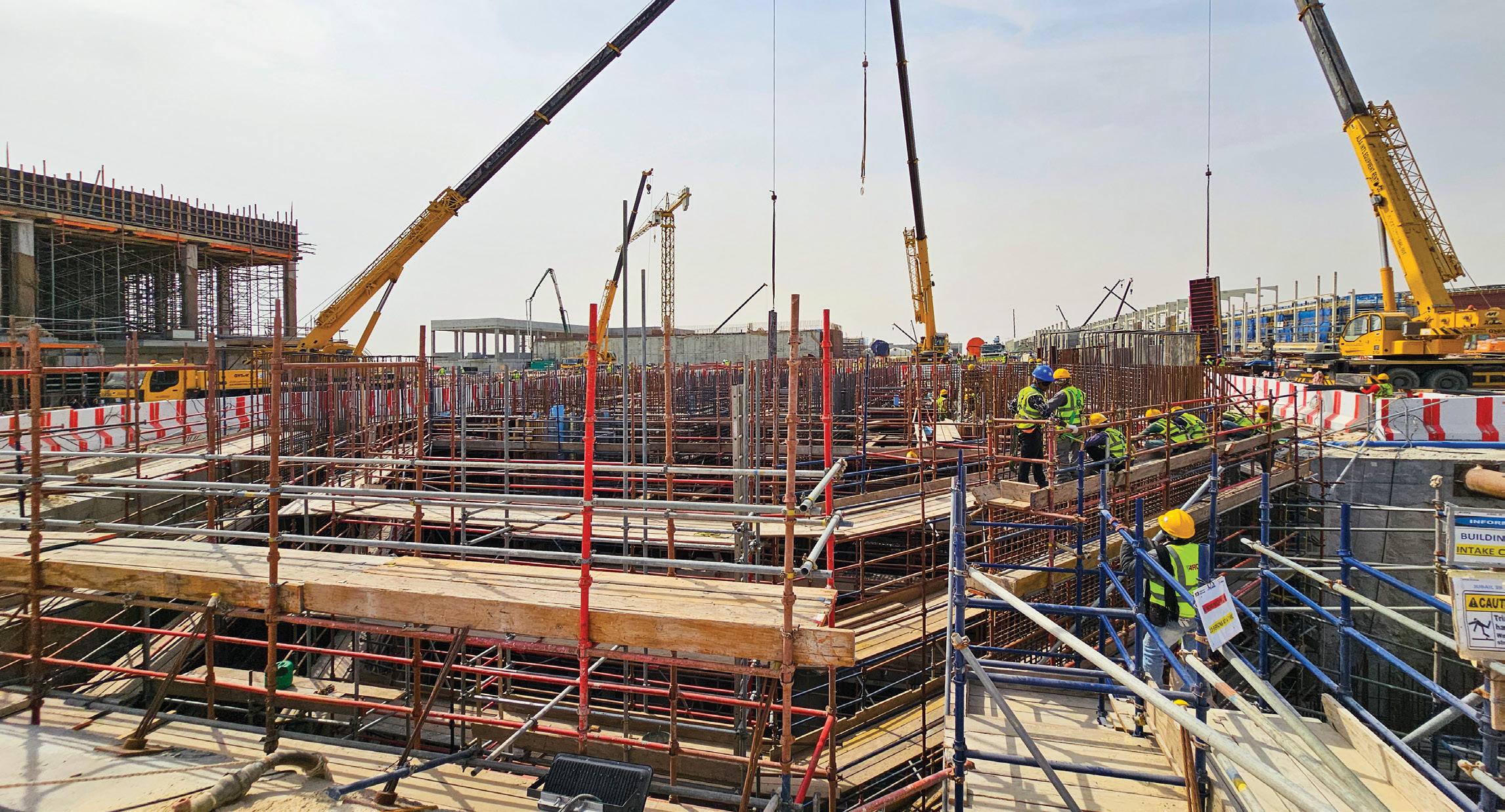
In 2013, Fernandez started her professional career overseas, working in three natural gas Power Plants in Manchester, UK, and DubaiLive by 2024 The plant will supply 570,000m3 of potable water to the Riyadh and Qassim regions once commercially operational in 2024.
and probably different women have had very different experiences within the construction sector. But in my particular case, without ignoring the difficulties and small obstacles, I have fortunately not faced any major problem that had required my employer´s intervention on the matter.
How can the glass ceiling that exists for women in many construction firms be overcome?

What is your advice?
The glass ceiling that exists for women in many construction firms can be overcome through a combination of strategies aimed at creating a more inclusive and equitable workplace culture. This can include:
• Leadership commitment to diversity and inclusion is essential to overcoming the glass ceiling. Leaders should take proactive measures to create a culture of inclusivity and equity, set clear diversity and inclusion goals, and hold themselves and their teams accountable for progress
• Establishing mentorship and sponsorship programs can help women in the construction industry overcome the glass ceiling by providing them with guidance, support, and opportunities for career advancement
• Companies should address implicit and explicit bias in the workplace by implementing training programs and policies that promote diversity, equity, and inclusion such as the Diversity Committees that ACCIONA relies on
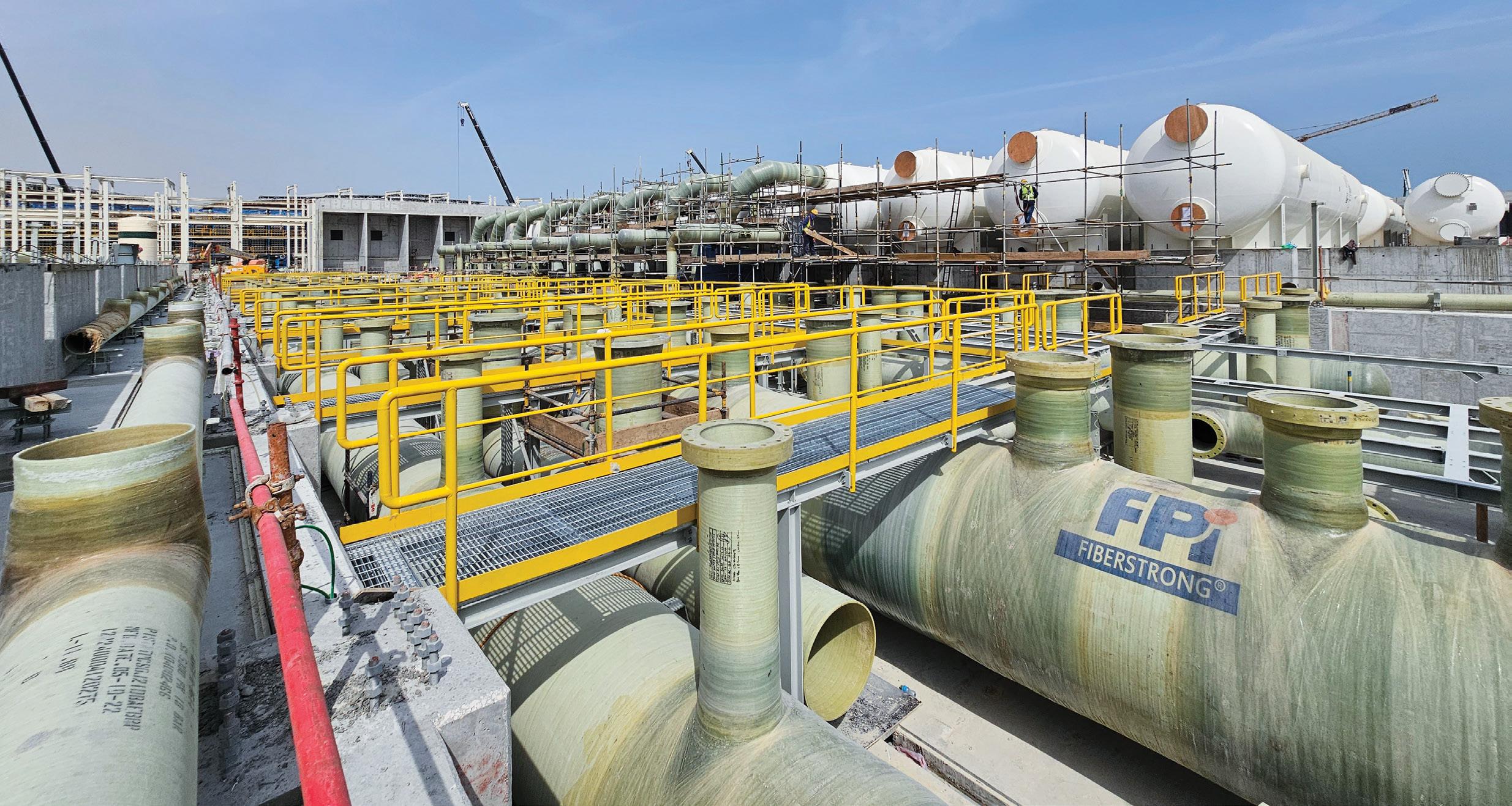
• Providing flexible work arrangements can help women balance work and family responsibilities and increase their participation in the construction industry
• Companies should actively recruit and retain women in the construction industry by implementing targeted recruitment strategies, providing attractive development opportunities, and offering competitive benefits and, of course, compensation packages By implementing these different strategies, construction firms can definitely create a more inclusive and equitable workplace culture, which can help women overcome the glass ceiling and advance their careers. This not only benefits individual women but can also lead to better business outcomes and increased innovation in the industry.
The first barrier that women in this industry face is the scarcity of women –even nowadays, in most projects I’ve been involved in, there’s not a single woman in sight. Due to this, many people see it as very unusual to deal with a woman in this business”

MIDDLE EAST
Project success hinges on the first few months. It’s the time of maximum influence to set things up efficiently and effectively, identify obstacles and opportunities and deliver a resilient project management plan. Yet, the beginning of every construction project also sees new people and old processes collide in a melting pot of methodologies, and as modern projects grow in complexity and ambition, so do the risks. Without a clear, consistent framework agreed by all parties, miscommunication and incoherence can be baked in. This is a common reason for all manner of trouble down the line: overruns, rework, or expensive changes to the plan during mobilisation. That’s why the first ninety days of a project set the tone for the entire schedule. However, projects range in size and scope, depending on local conditions and
challenges. What may work for one may not actually work for others.
The key behind a reliable project delivery process, therefore, is a marriage of strong procedures and well-integrated technology. On any size or complexity of project, digital tools enable the deployment of a state of the art analytical machine in the first ninety days, with scheduling, risk and cost integrated to provide strategic overview of the entire project. So not only do projects perform more predictably, accessibly and collaboratively, but new data continually feeds back into the system to improve future performance.
Time moves fast in a project’s opening months. Data must be benchmarked, communication strategy agreed, and a project management plan perfected. By thirty days, all requirements will have been mapped, and by sixty days, the client will
Through customisable data analytics and global best practice, every project can start off on the right foot says Faithful+Gould’s Oliver Kallenborn
receive recommendations along with a digital strategy report. This lays the foundation for all the digital work to come, planning the IT infrastructure and project technology. As projects become increasingly complicated, often with multiple partnerships, this process only grows in importance. There never will be a one size fits all solution. Expenditure varies depending on the client and the project’s aspirations. Some projects will start with a handful of people on site, some with dozens. But decisions must be made at this point to set up control before mobilisation, after which the consequences of poor planning become extremely costly. If the right guiding processes are in place, however, the minimum operating standard can be raised across the board. So that when the ninety days are up, a strong foundation is in position.
Modern projects rely increasingly on data – to track, guide and analyse. But the tools that work with the data are only as good as their input. Although this may seem like common sense, across industries we regularly come across poor levels of data maturity. This holds back the cascade of benefits that digital can reap. So, it’s important to get it right the first time, and build strong foundational pillars to ensure

and standardisation allows us to learn from every project, more comprehensively drilling down into the details to understand why mistakes happen and how they can be avoided. Sometimes that just comes down to having the right solution for the right project, so a customised digital strategy can immediately highlight any inconsistencies and inefficiencies.
After the first three months, scheduling analytics come online, improving and simplifying forecasting. No longer does a technical expert need to stay on top of a complex, difficultto-access schedule – it’s now a clean, transparent interface that improves line of sight for everyone involved with the projects, and clearly flags schedule risks to the project management team. This improves collaboration and control on site, accommodating a diverse range of technical abilities, ensuring there’s no place for inefficiencies to hide and enabling you to provide completion dates to the client with confidence.
As construction projects become more complex,
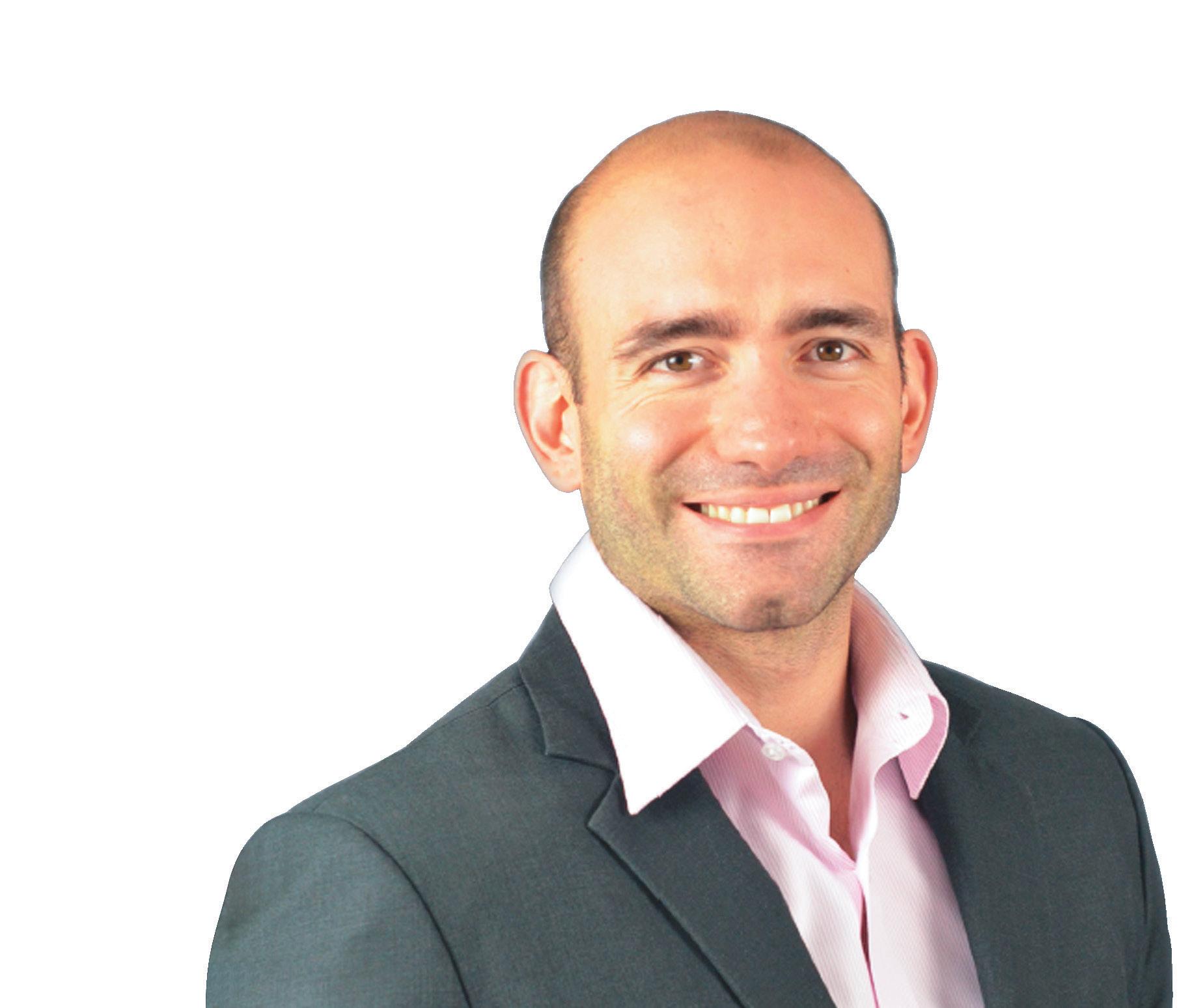
we increasingly need a counterbalancing force to simplify them. That’s the rationale behind Atkins’ Programme Management Office (PMO), as a set of tools for grounding projects and equipping teams to deliver above and beyond. We’ve been showcasing the potential of this approach with Kings College Hospital, who have been expanding their global reach. Phase One of their new hospital in Jeddah, Saudi Arabia is scheduled to open its doors later this year. The project team in Jeddah is using their analytics to their maximum capacity, with only a small team – generating huge efficiencies and raising the bar for data integration standards. With every project we apply PMO, we learn more and use those lessons to do it better in future. Which means best practice is now a standard, and we can adapt as it evolves. That enables project teams to focus on what matters: collaborating in strong working relationships and seeing the bigger picture, confident that every angle is covered by a consistent, comprehensive approach. So that, in an industry long known for overrunning and overspending, PMO integrates people, data and technology to chart a course to predictable and robust outcomes.
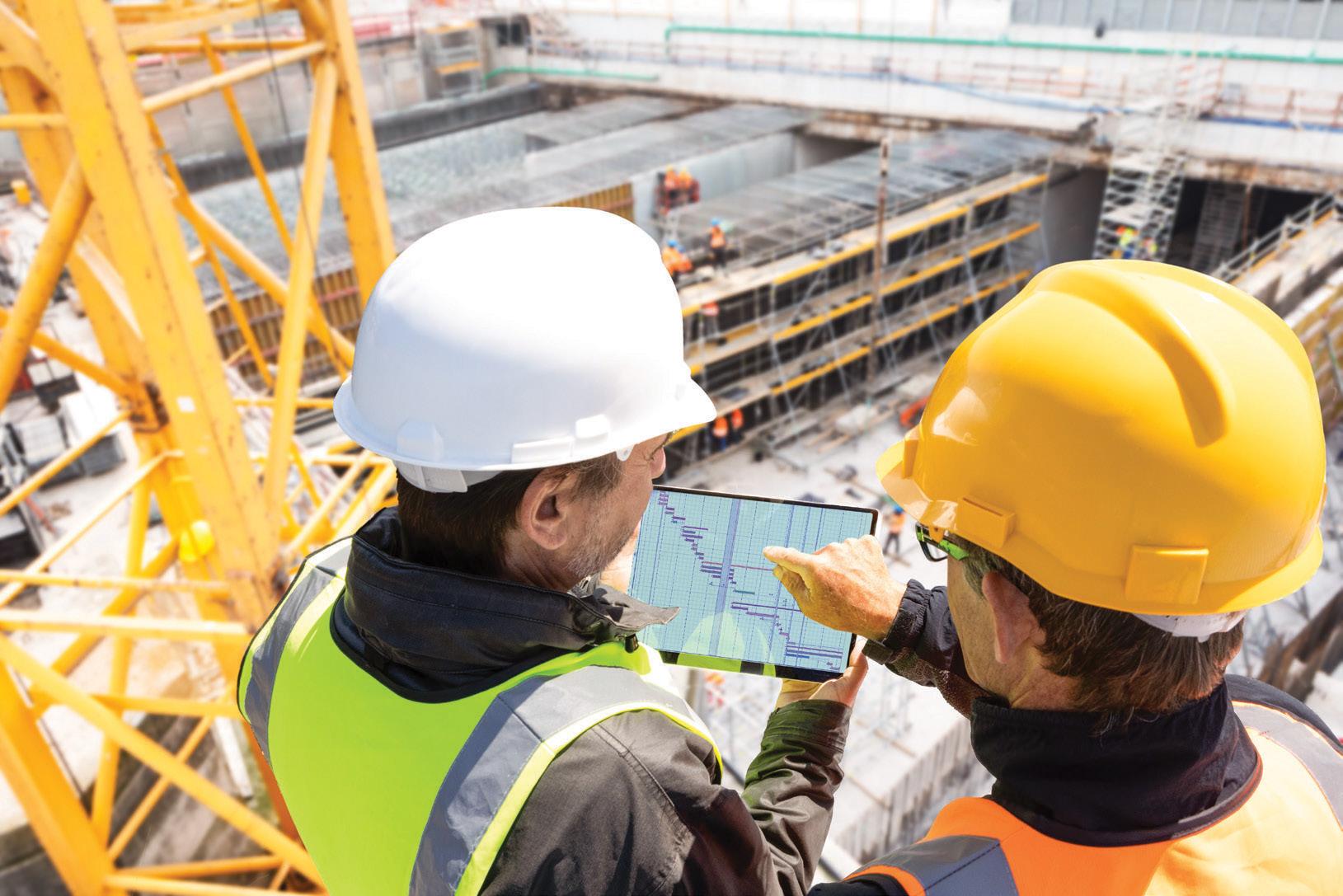
35-storey tower is located in front of the 1.8km waterfront boadwalk in Sobha Hartland
Developer Sobha Realty has completed its Waves project at the waterfront district in its Sobha Hartland community. The developer said the project received its Building Completion Certificate (BCC) “well ahead” of the planned construction schedule.

According to the developer, construction work on the residential tower began in February 2021. The firm said the project comprises 35-storeys and is located right in front of the 1.8km waterfront boardwalk in Sobha Hartland. The development offers several different unit types including one-bedroom, one bedroom + study, two bedroom, and two bedroom + maid’s room
The tower also includes a designated barbeque area, a yoga and meditation zone, and an infinity edge
swimming pool with a view of the Dubai Skyline and the waterfront.
The development is the first to be complete across the waterfront district of Sobha Hartland and offers views of the Dubai Skyline, Ras Al Khor Wildlife Sanctuary, Meydan Racecourse, Meydan One Mall, and Dubai Creek, the developer explained.
“We are delighted to have completed the construction of our iconic Waves project at the waterfront district of Sobha Hartland well ahead of schedule. Dubai real estate is projected to experience a strong expansion in 2023, with the residential property segment projected to witness growth of over 40%. We are keen to contribute to this growth by developing and accelerating the completion of our significant developments in the city,” said Francis Alfred, Managing Director of Sobha Realty.



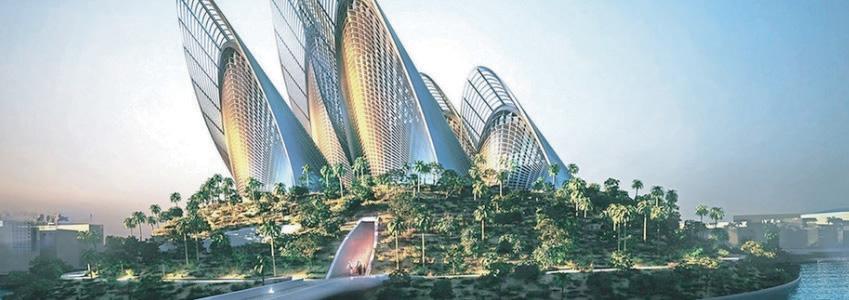



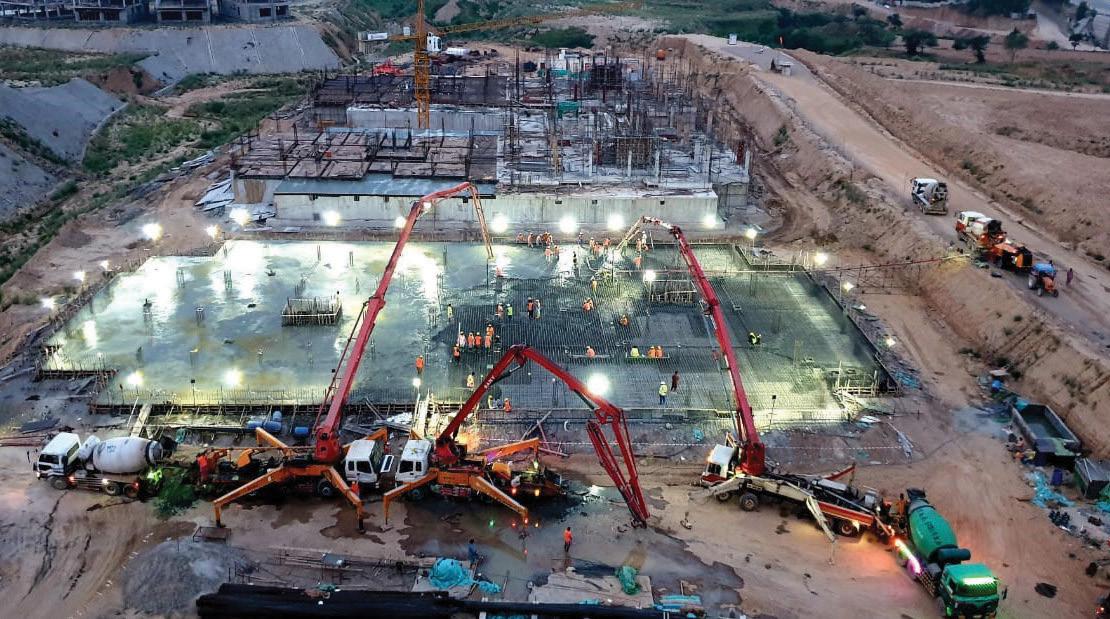
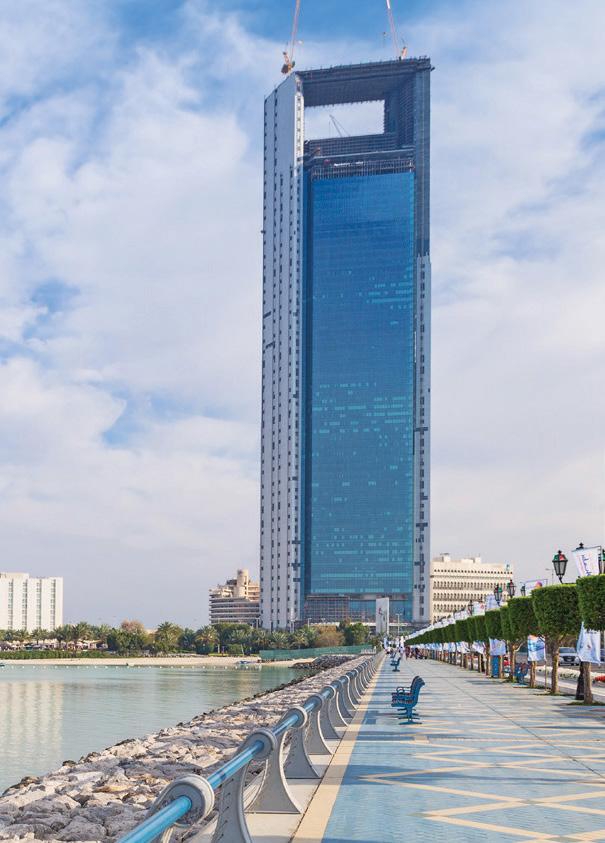






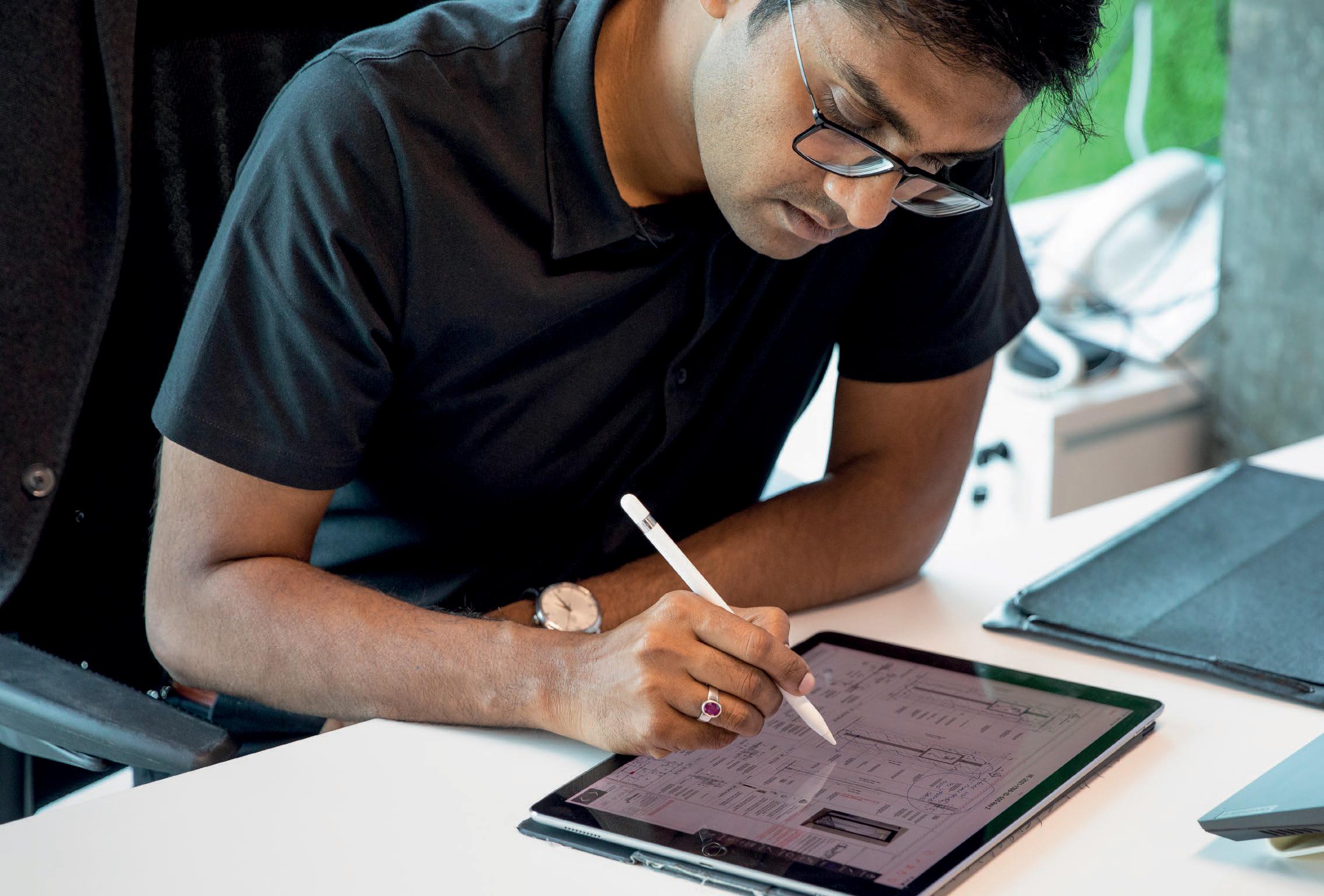

Smarter Construction Platform
“With real-time access to plan changes and associated notes, we remain tethered to every conversation.”
John Juanillo, Document Controller, Verve Design Interiors